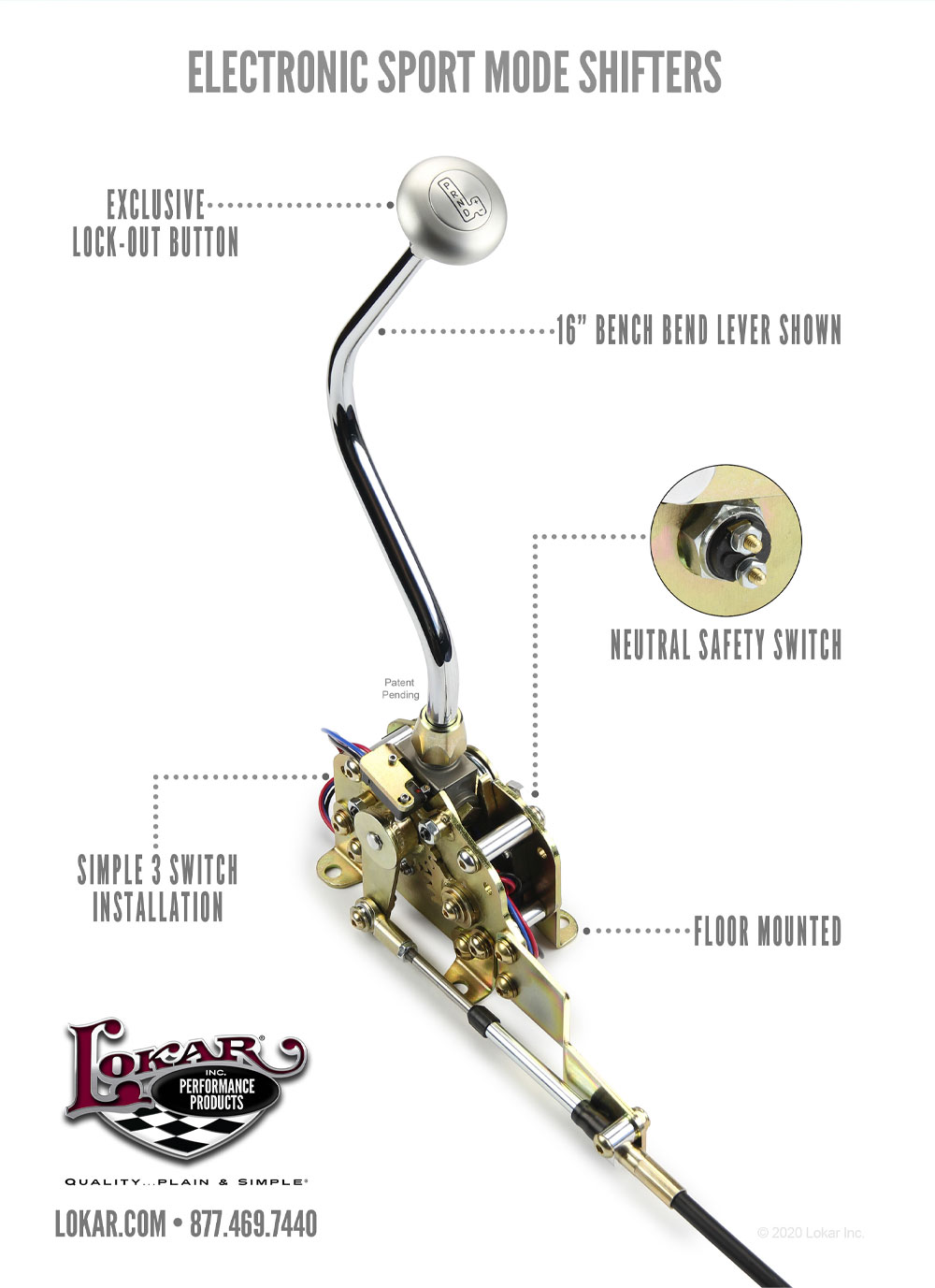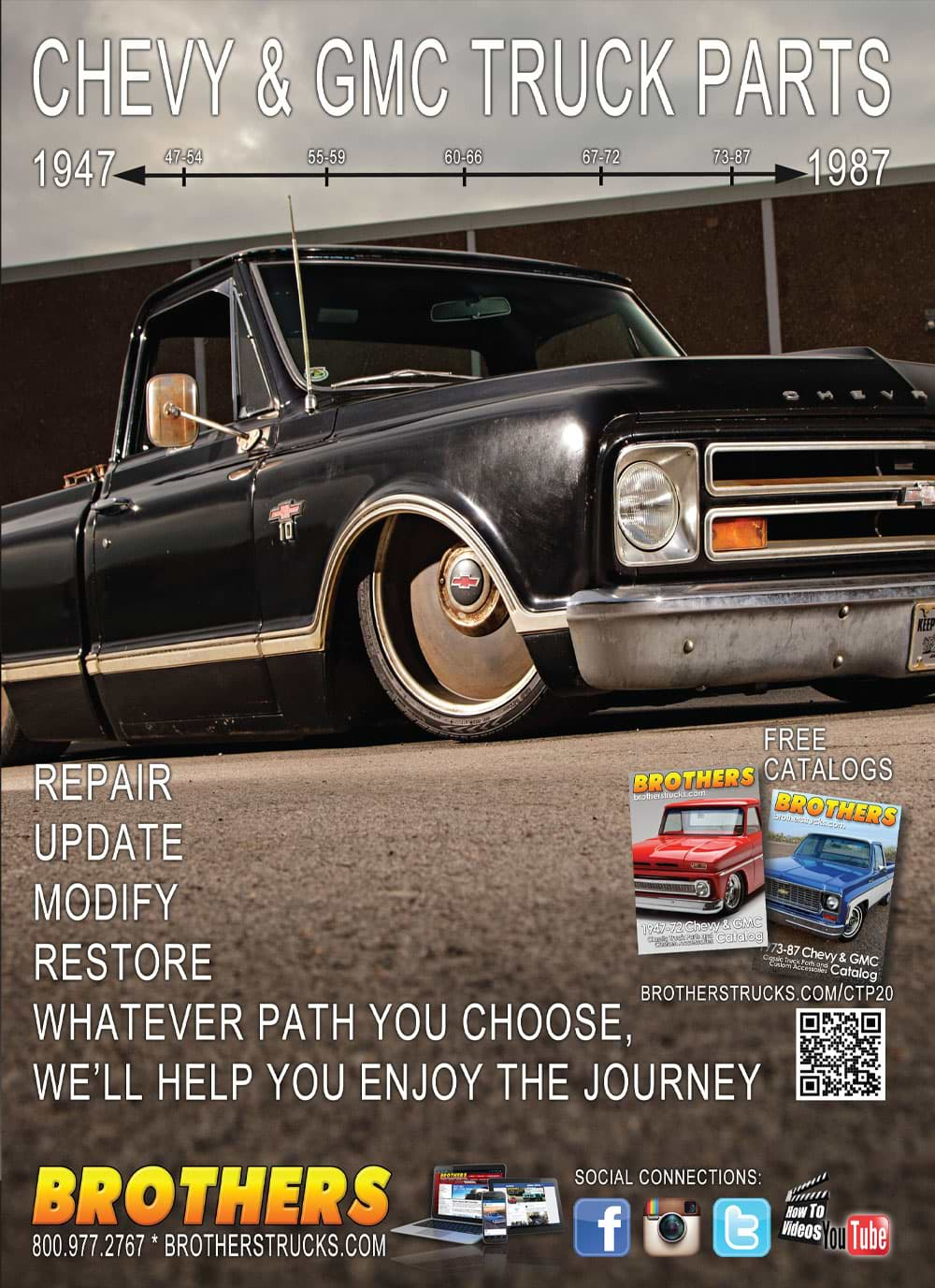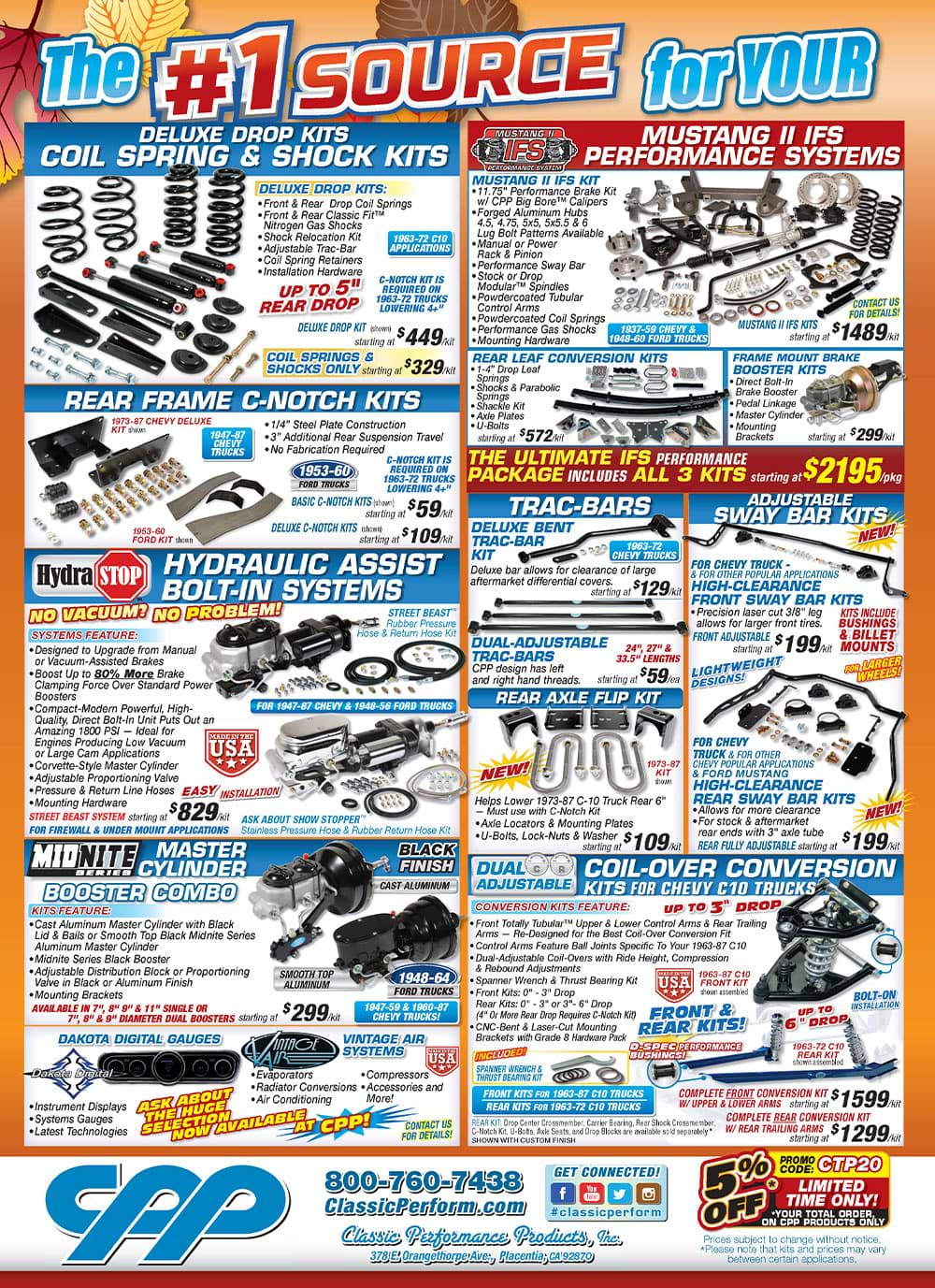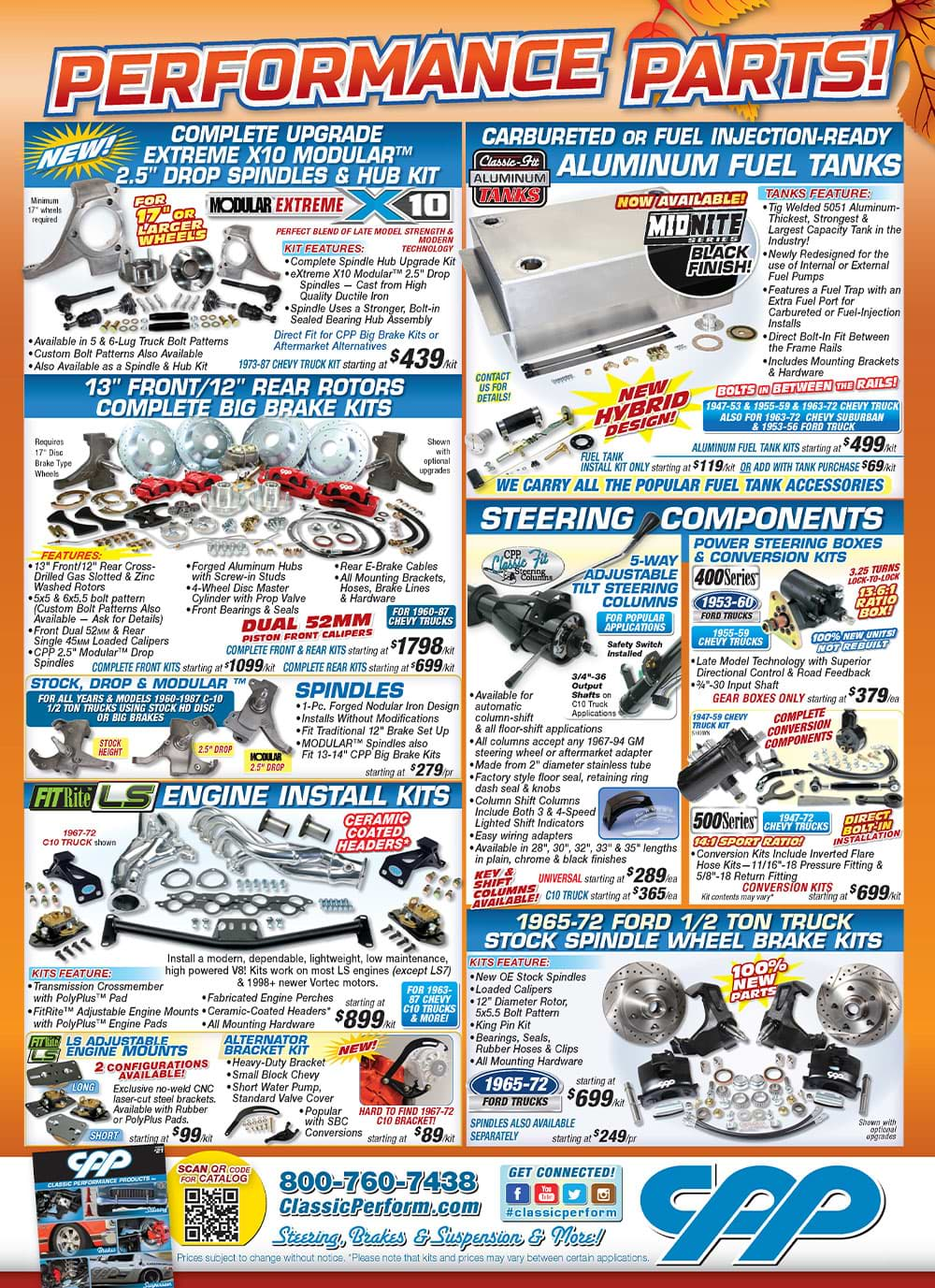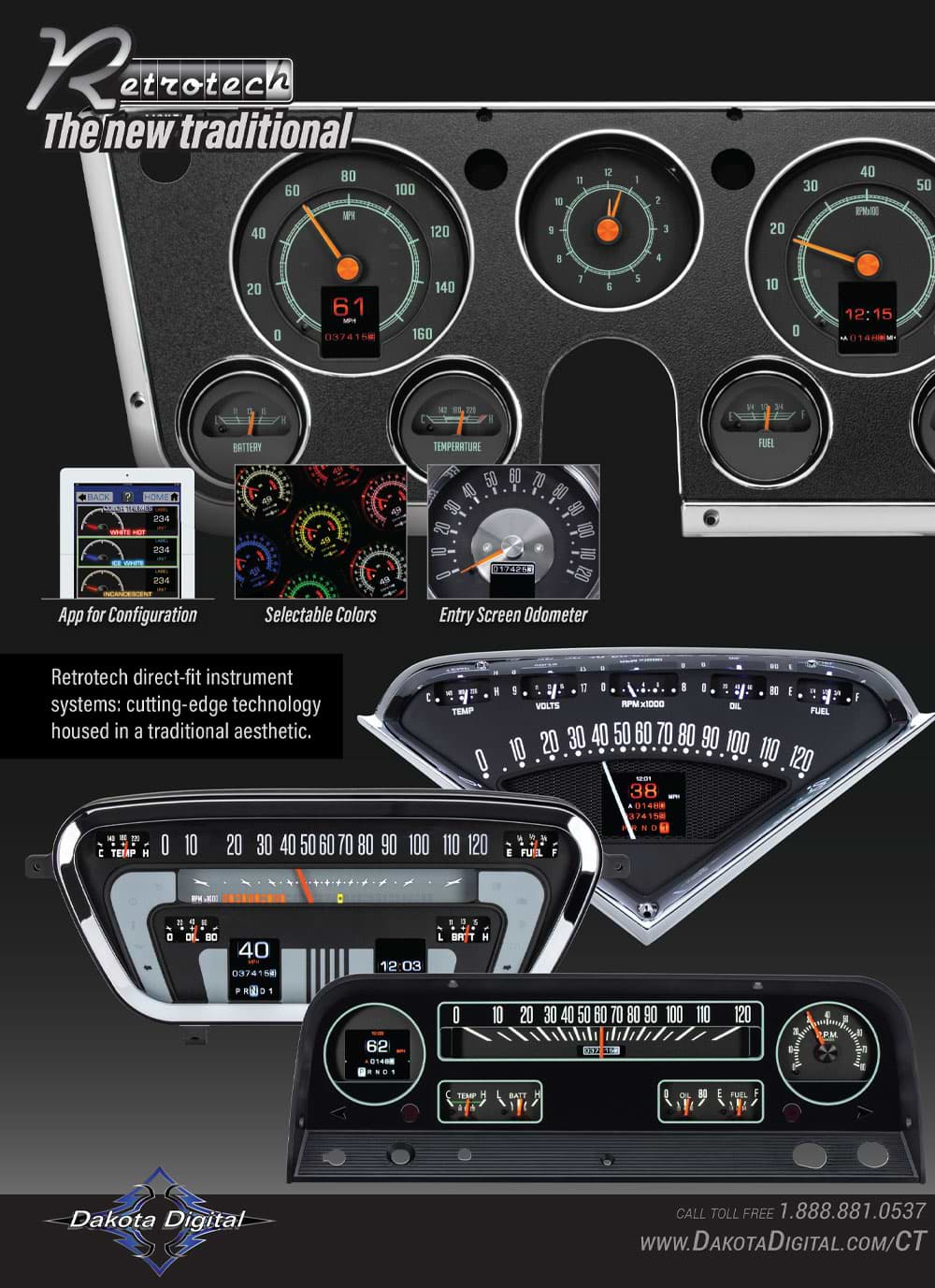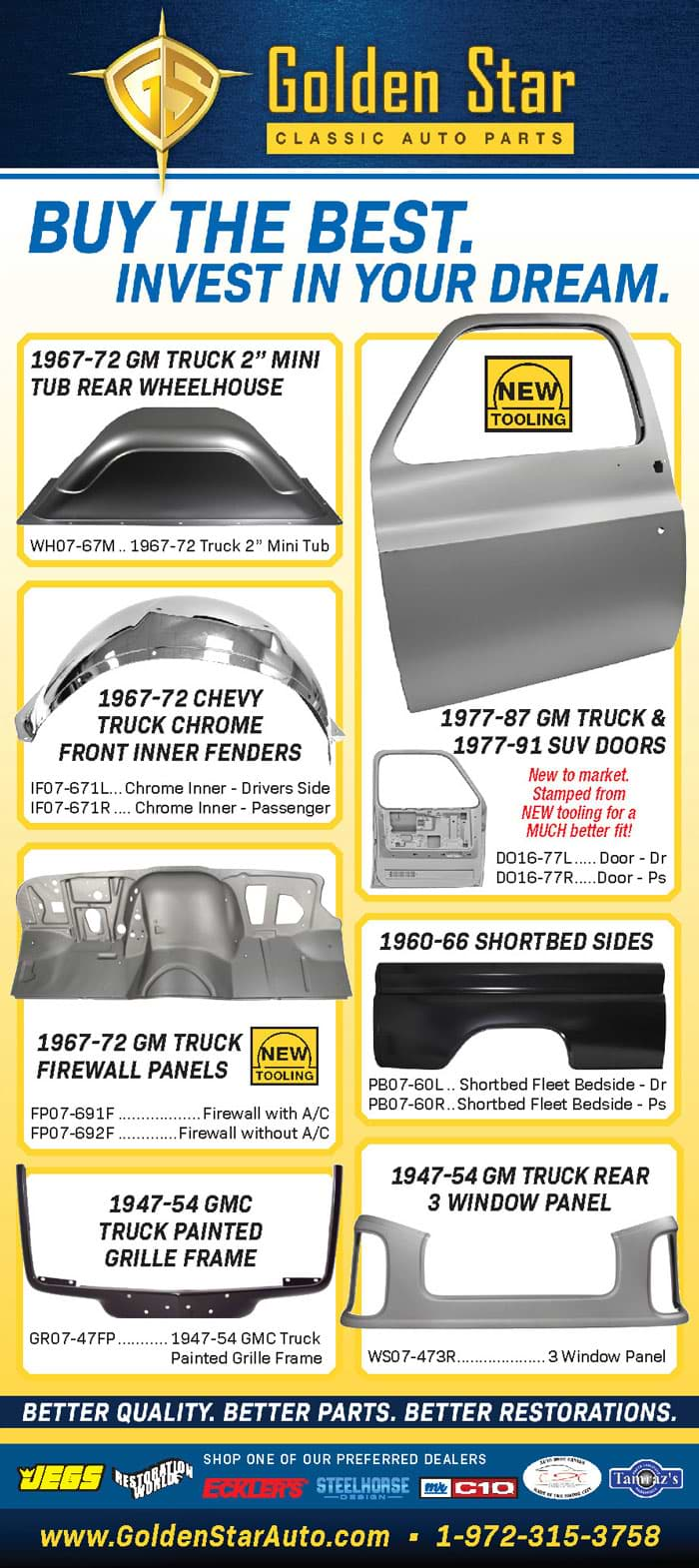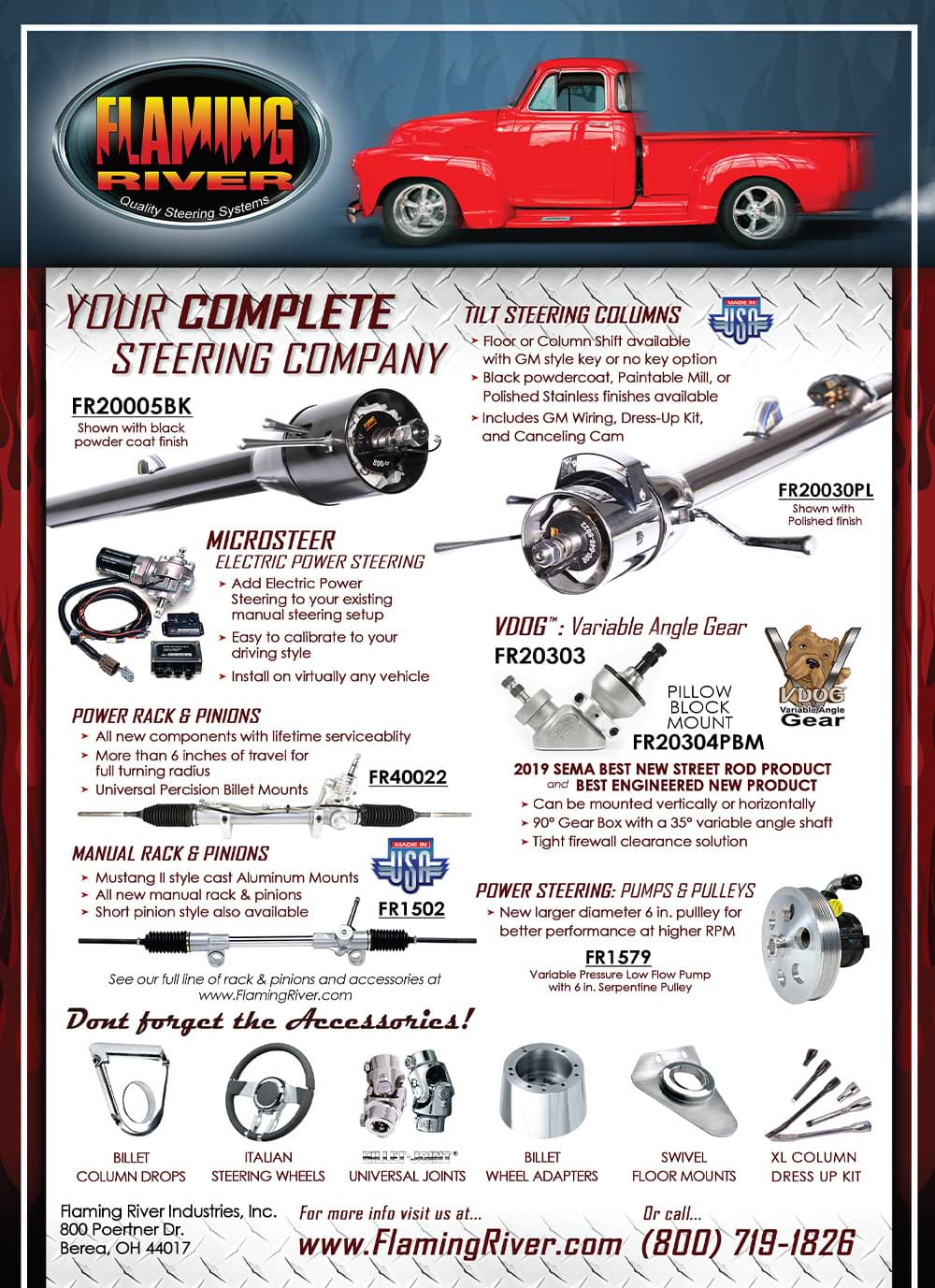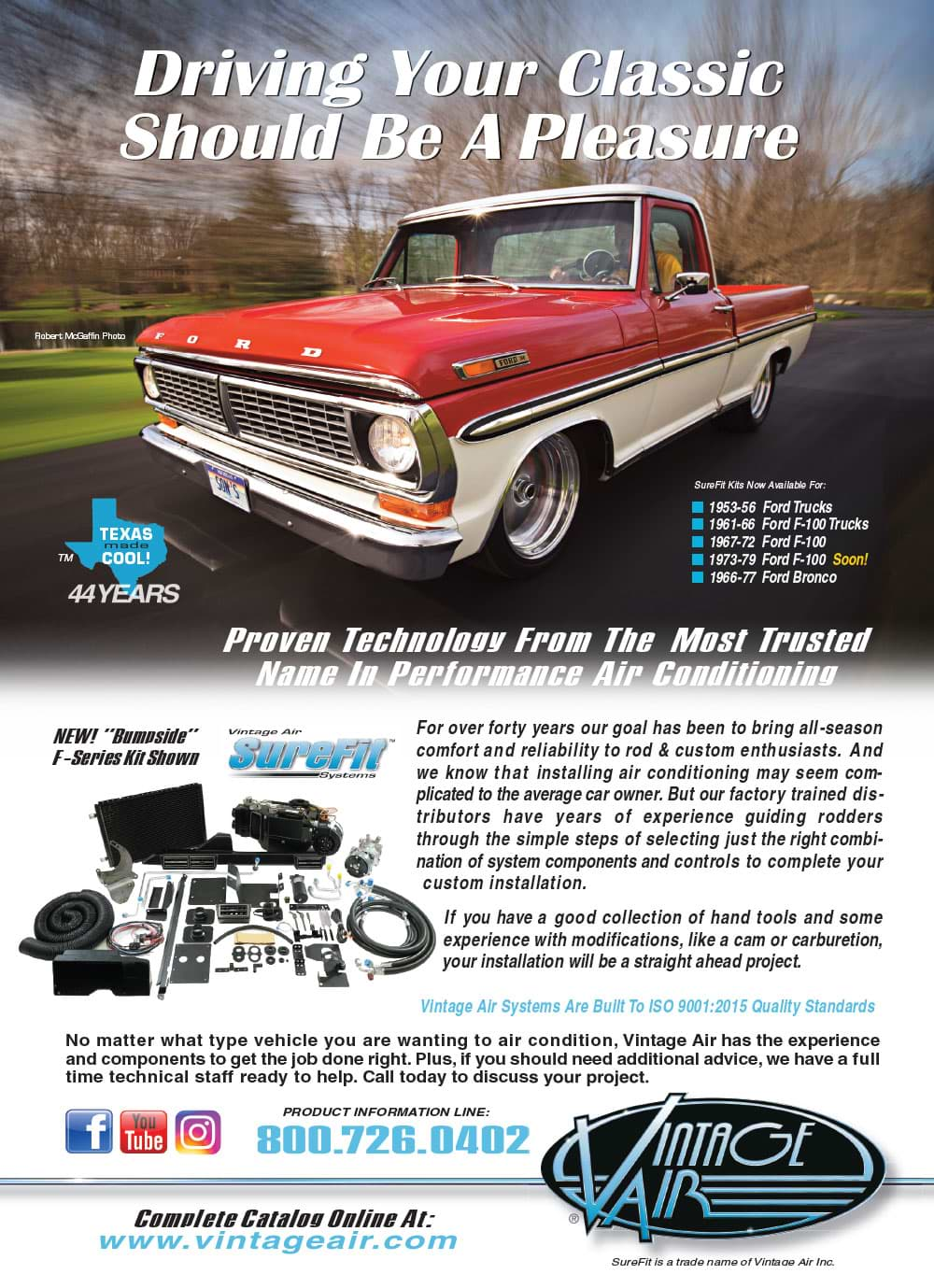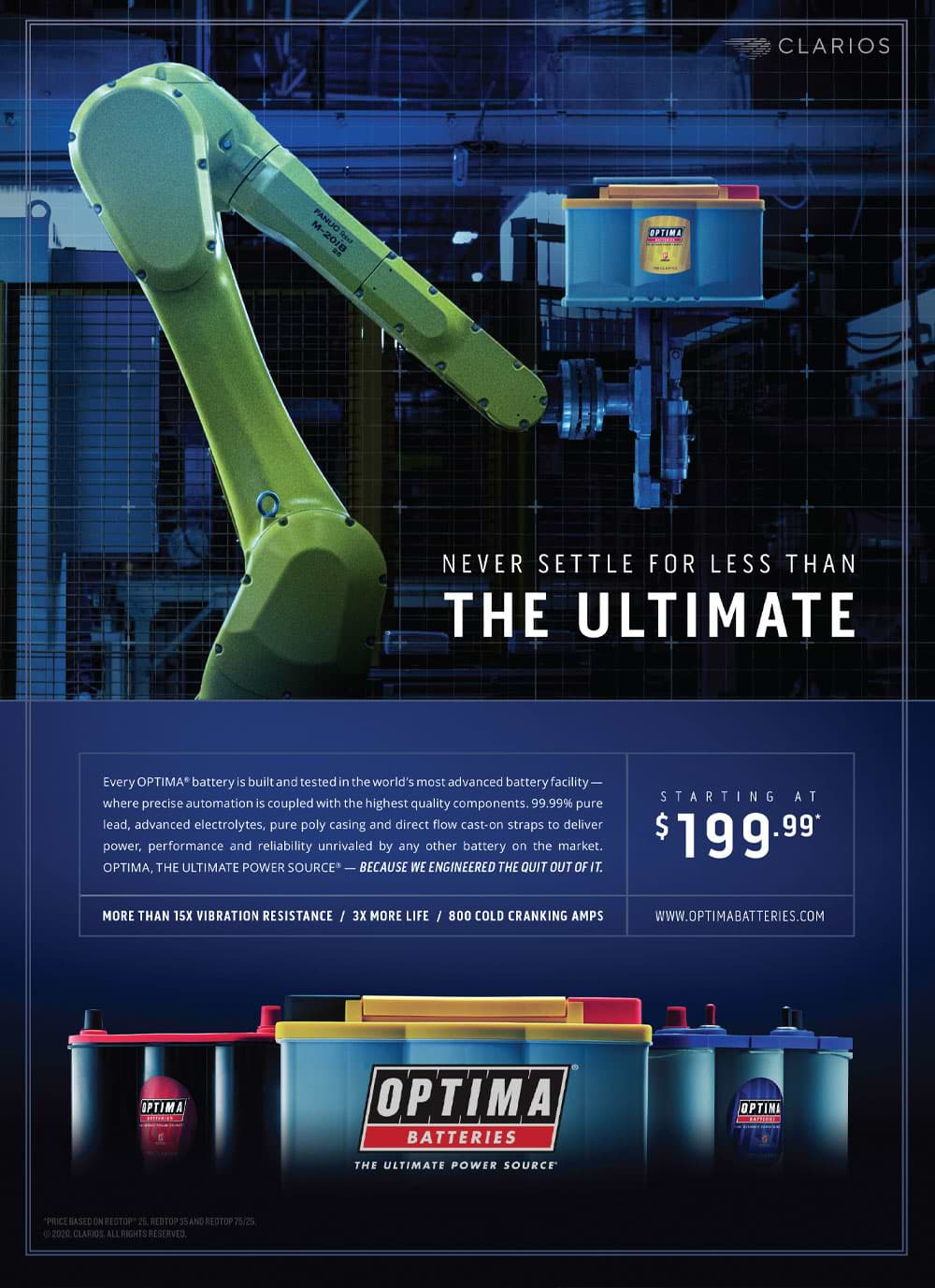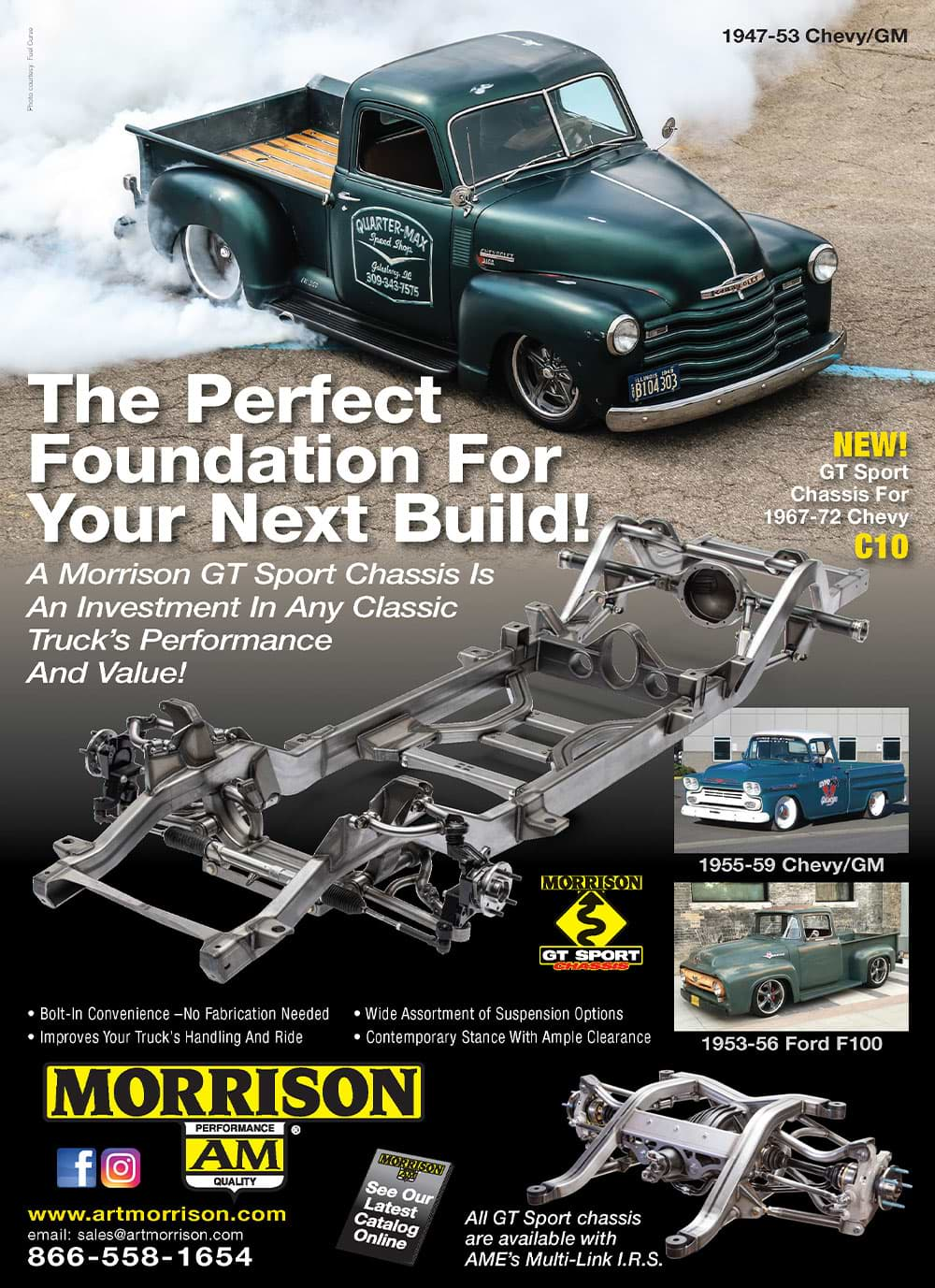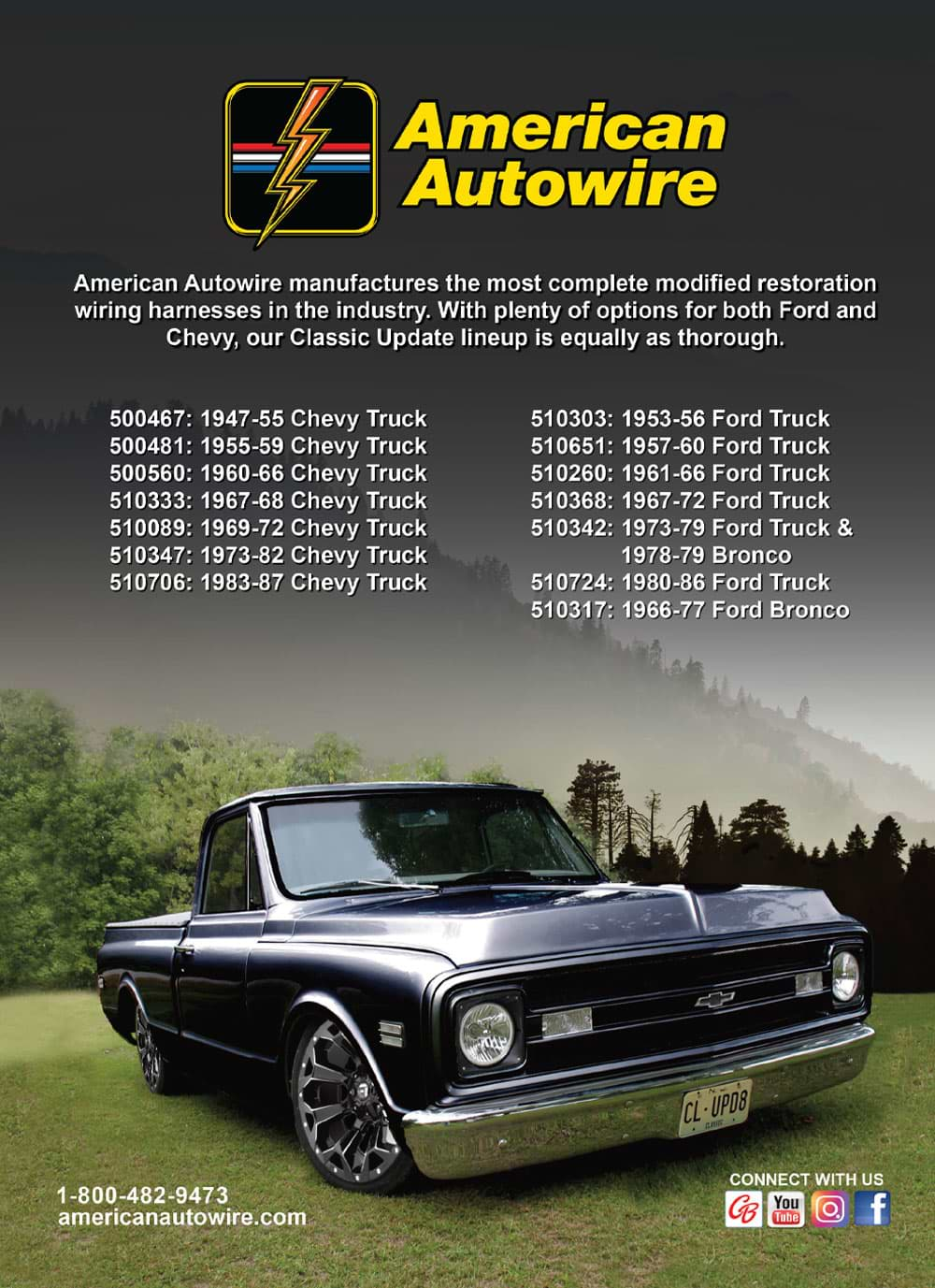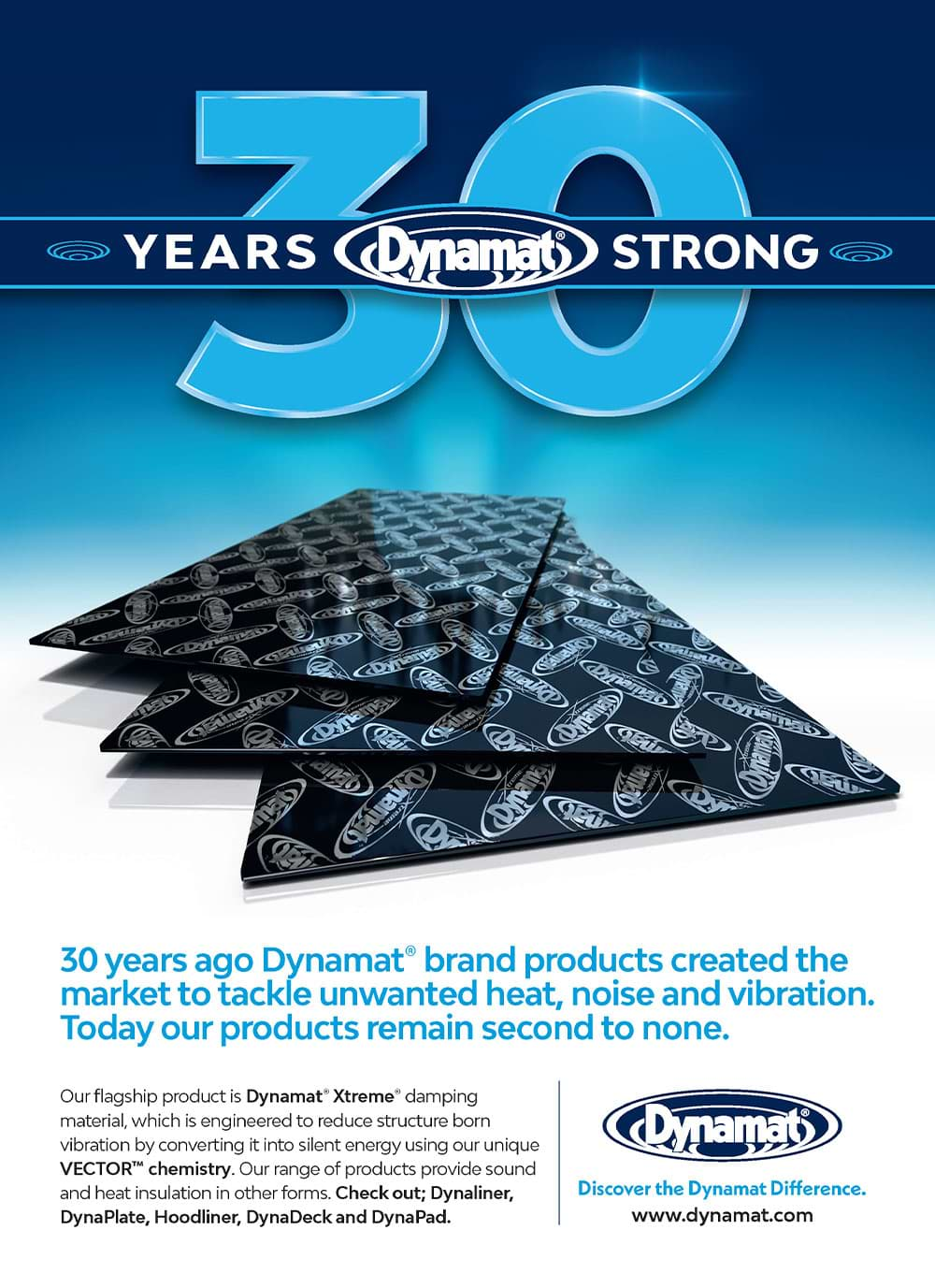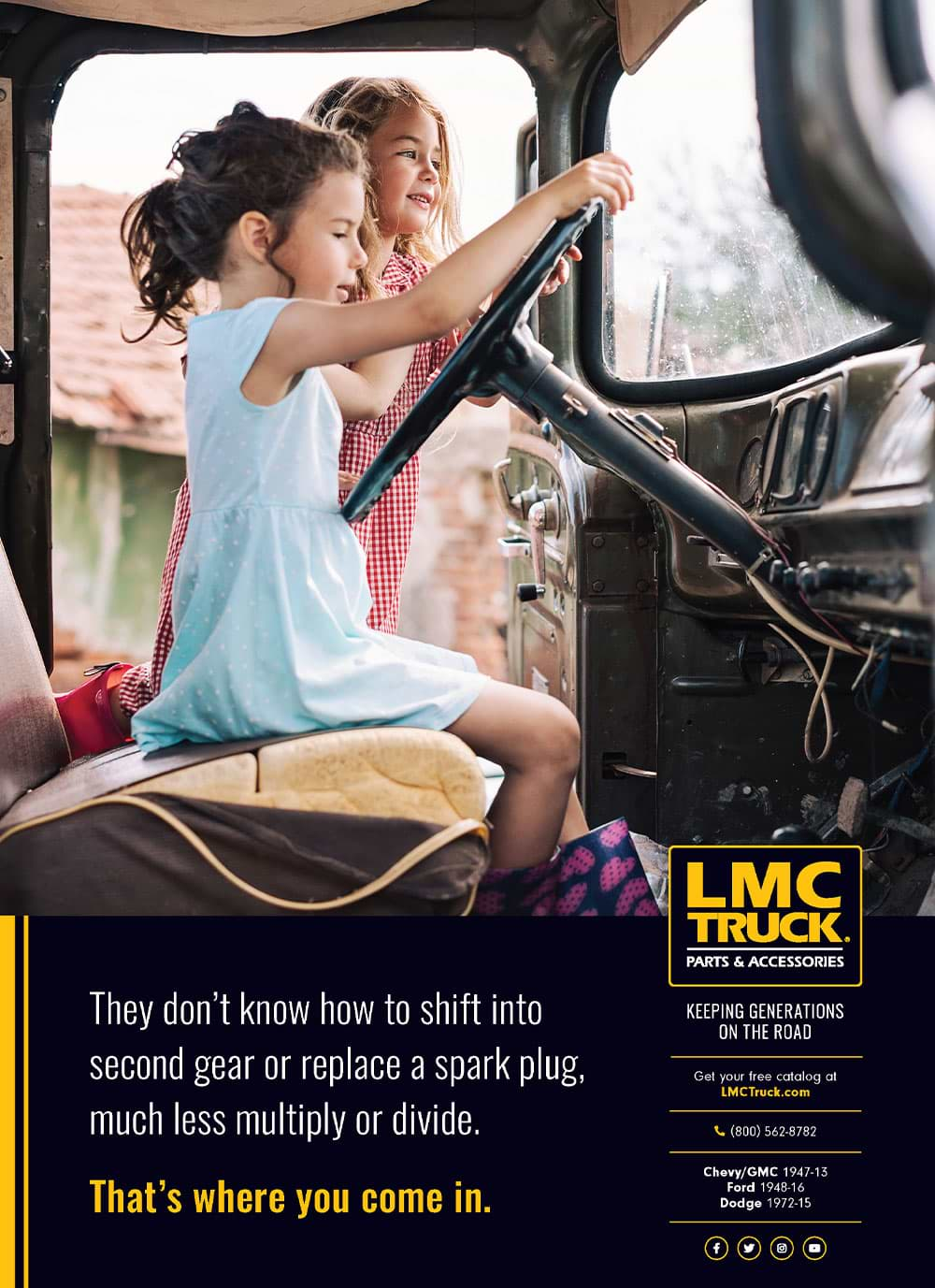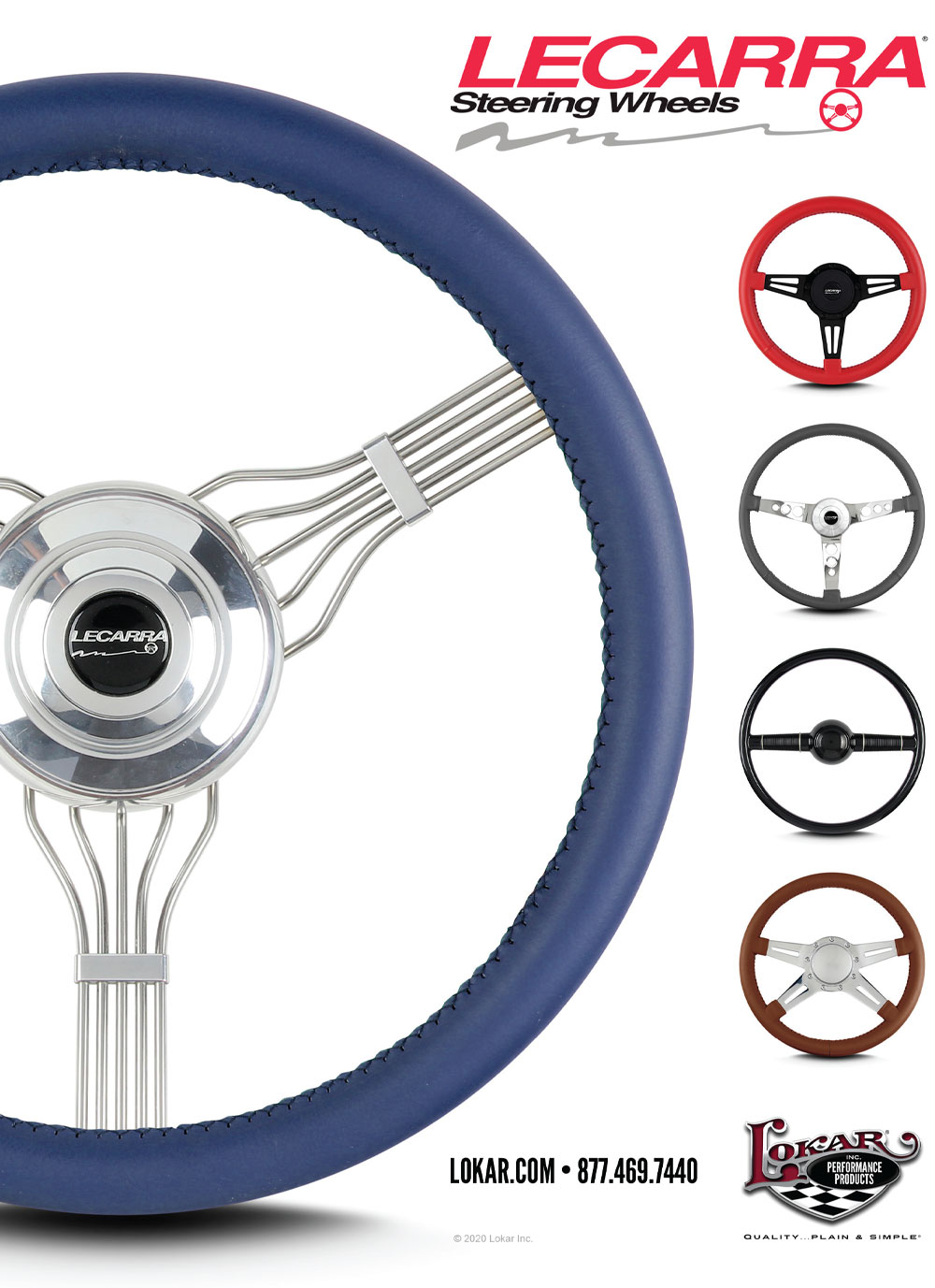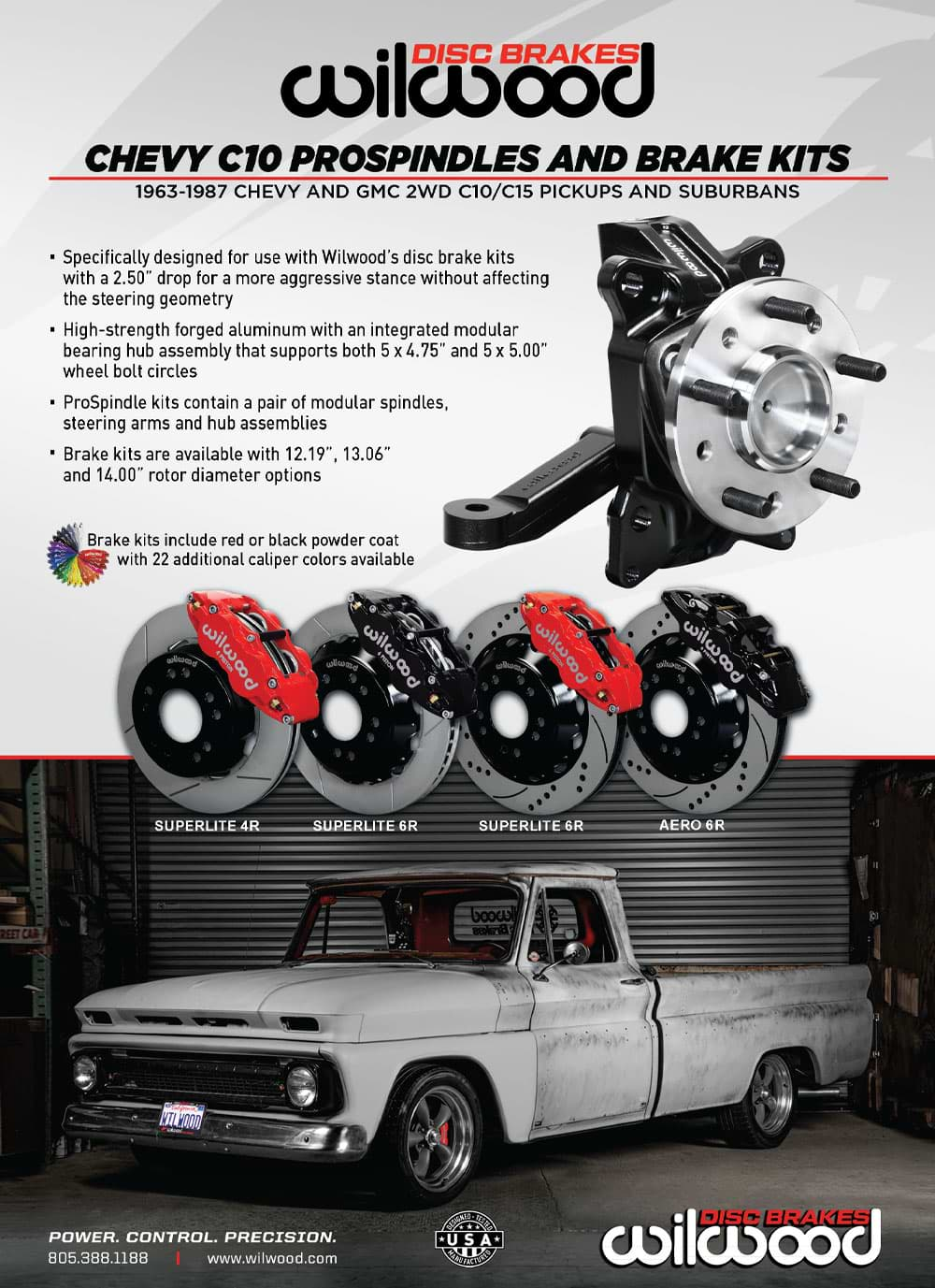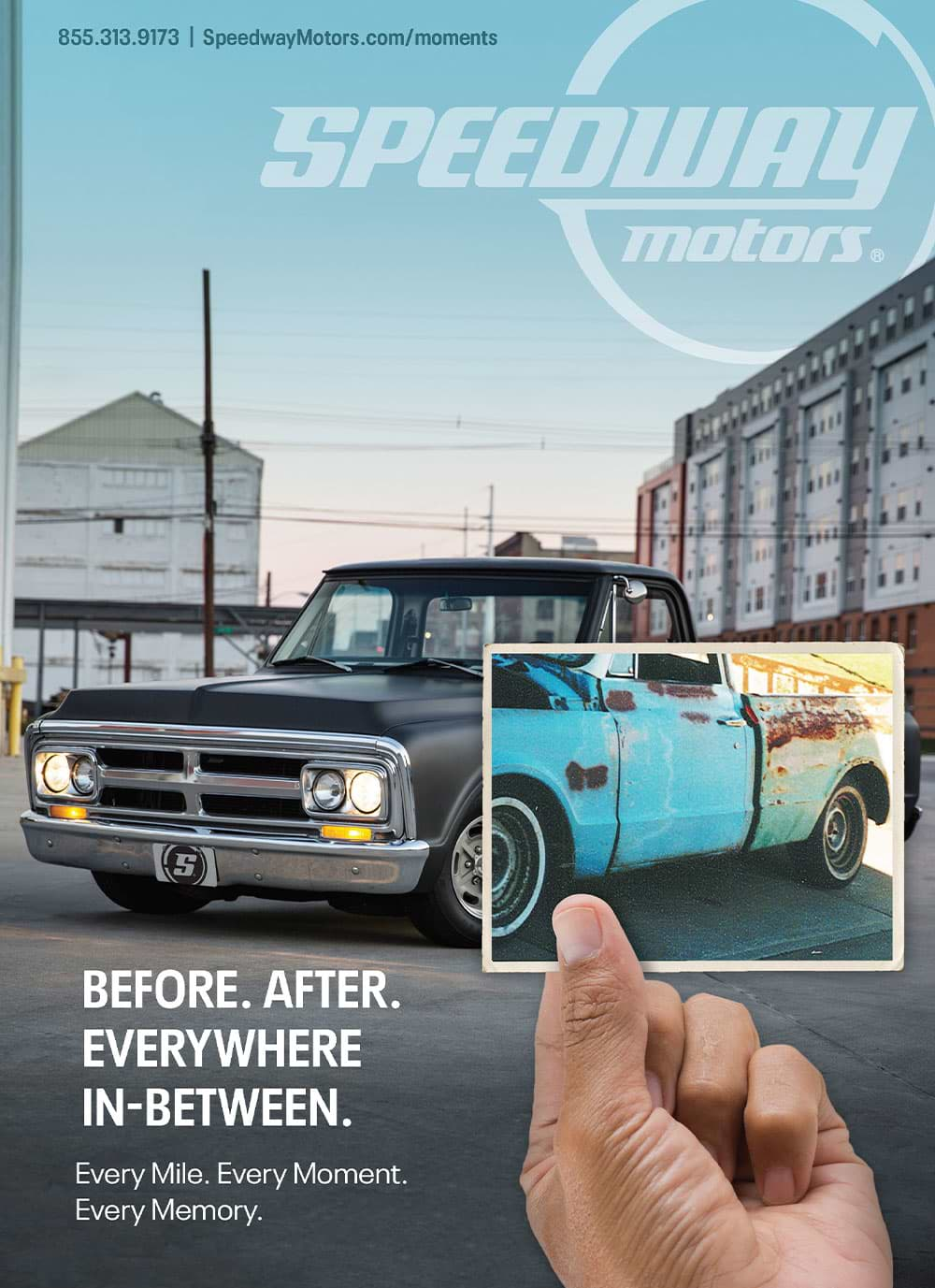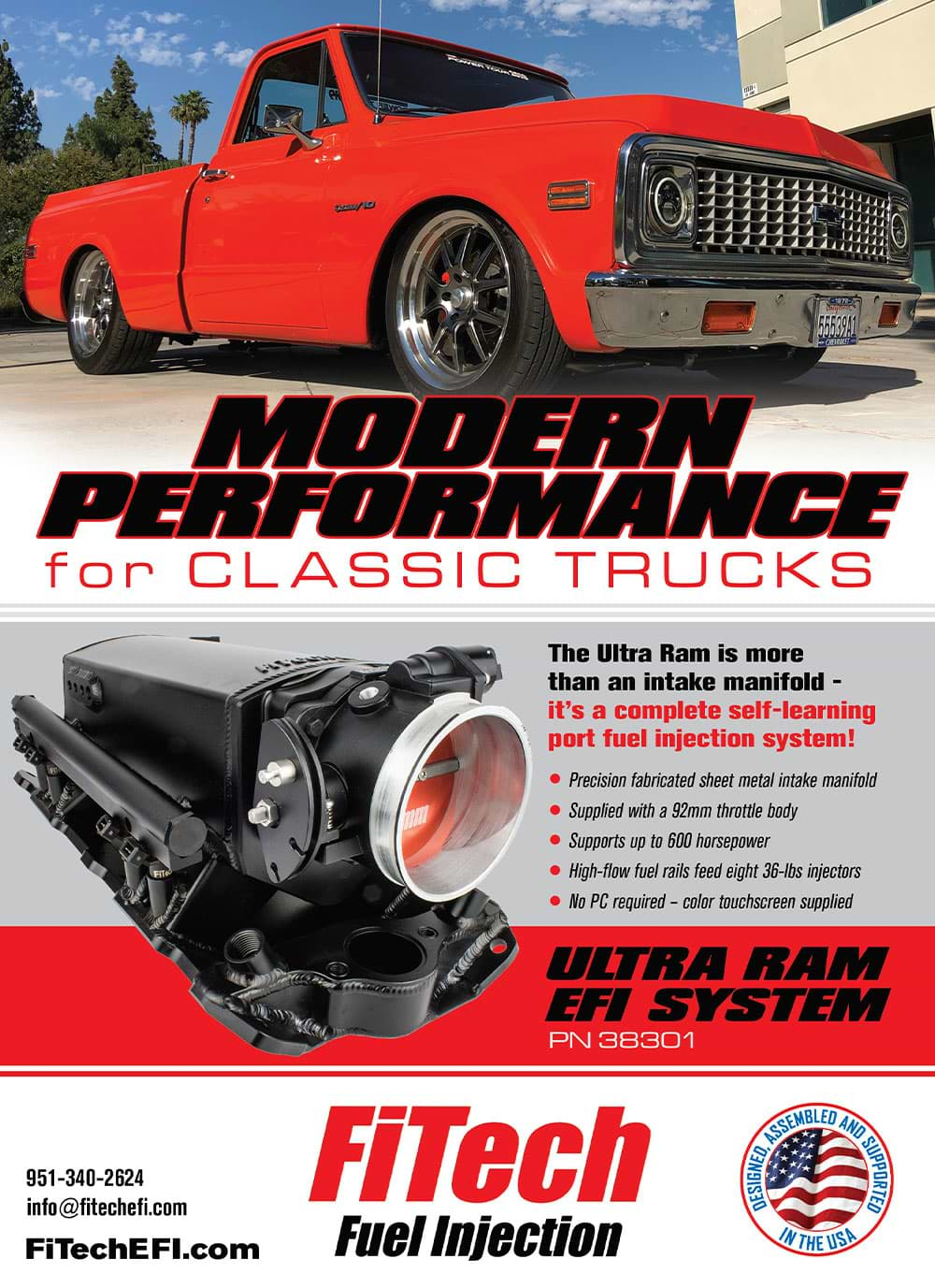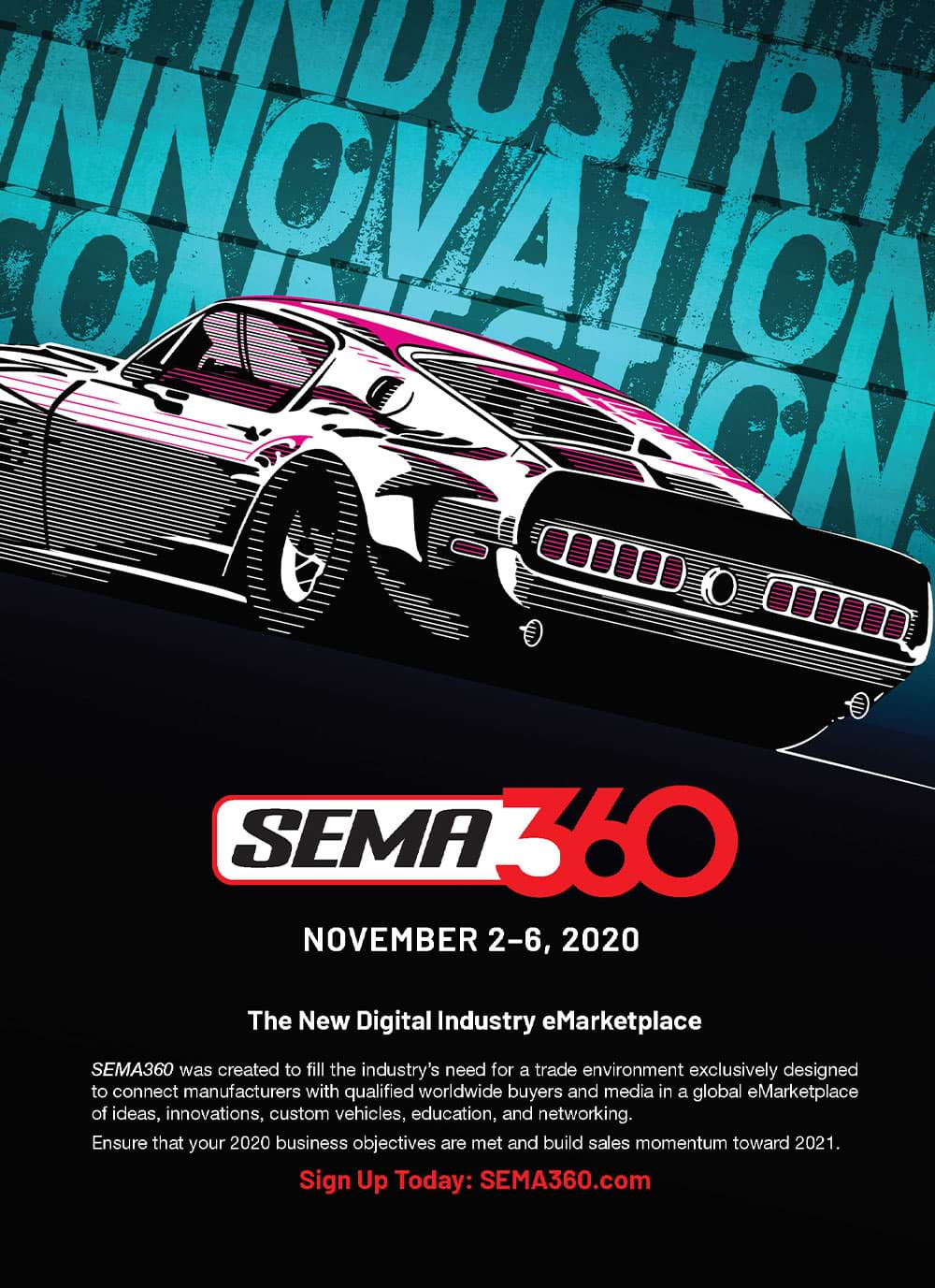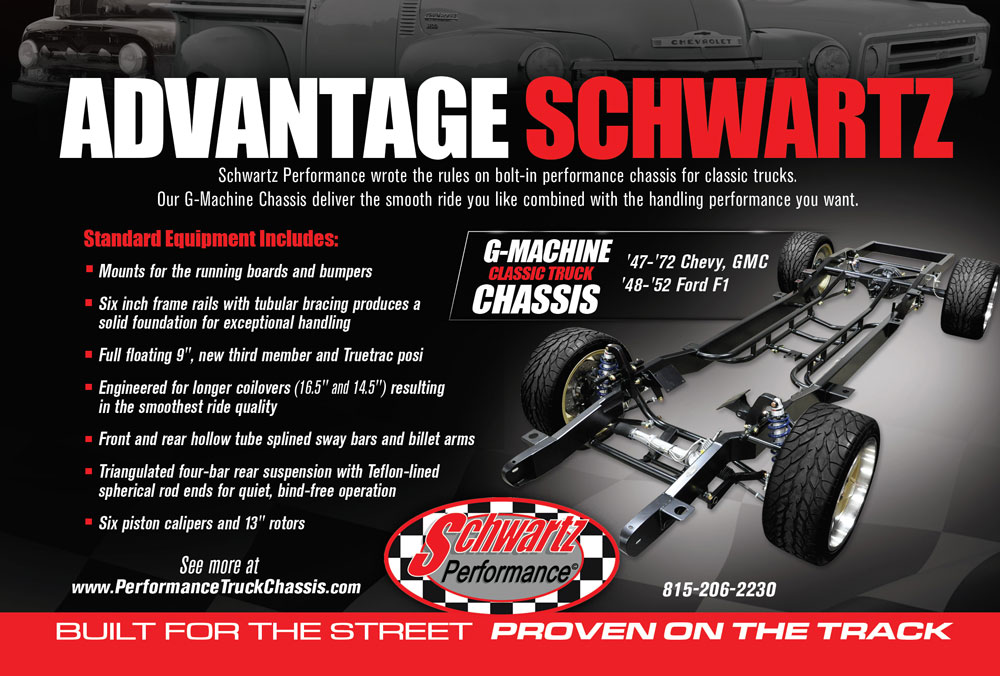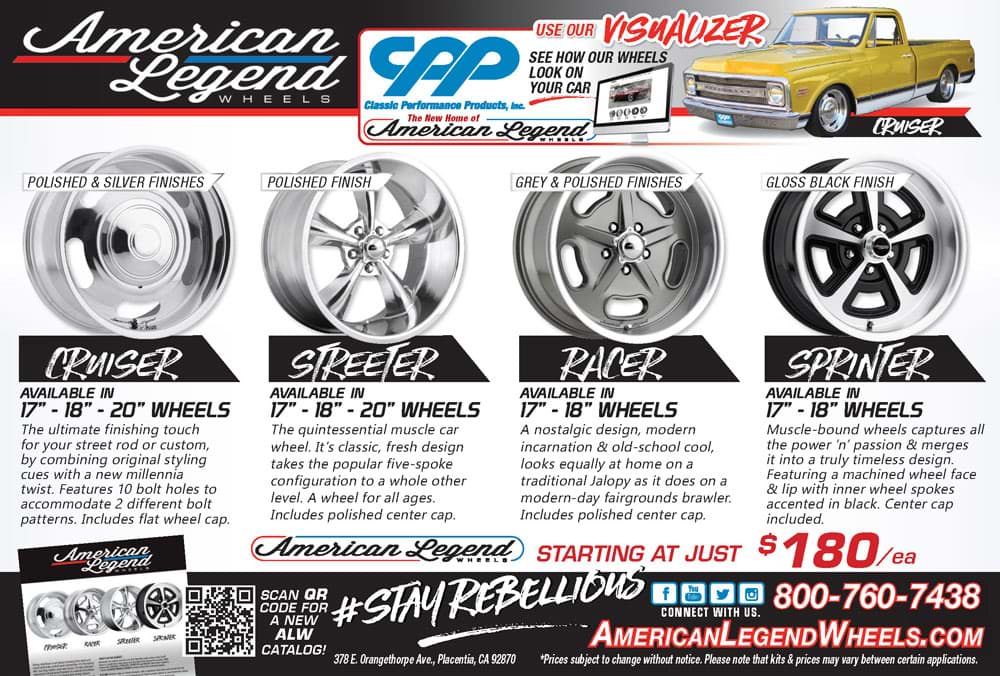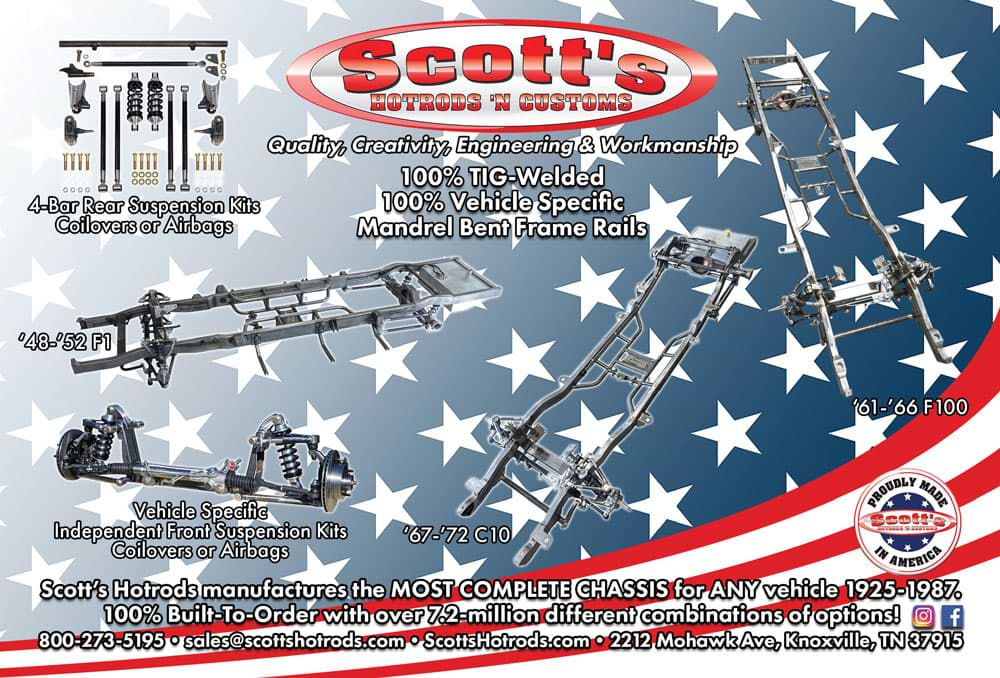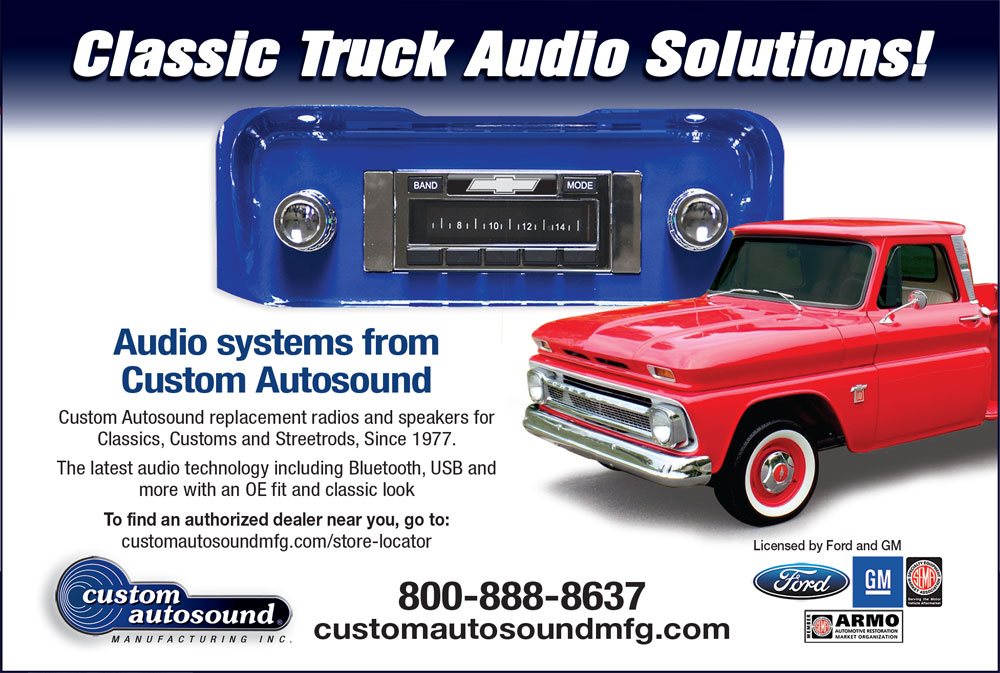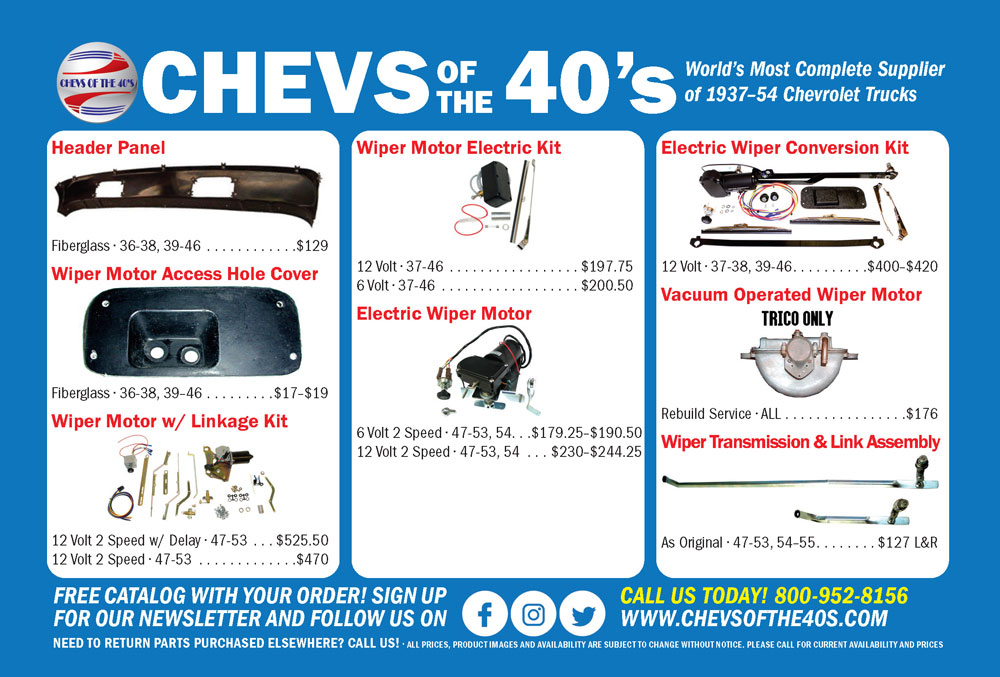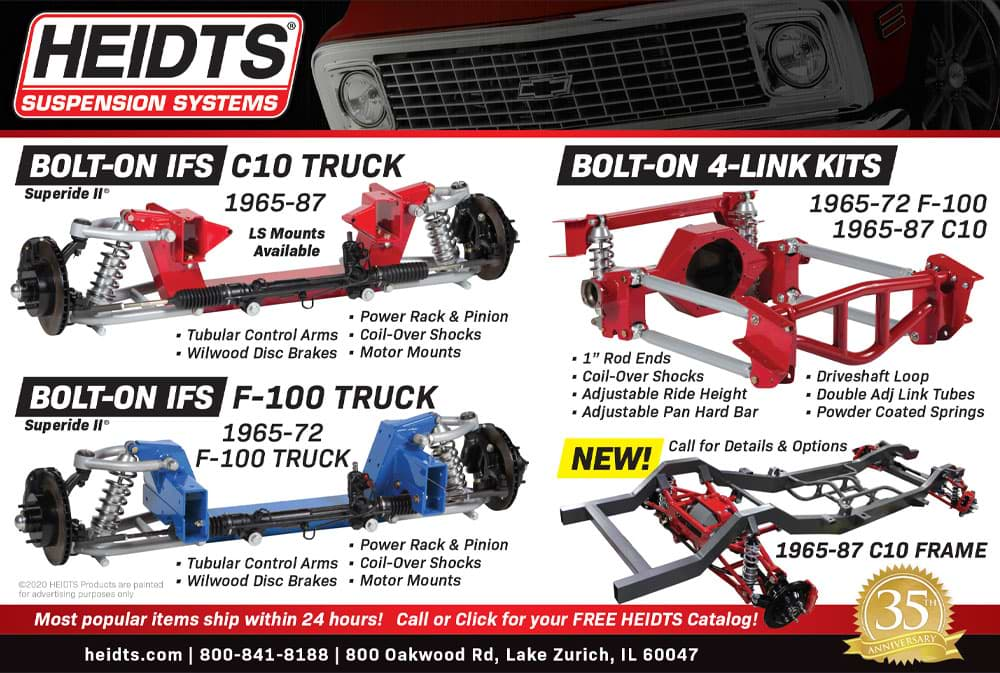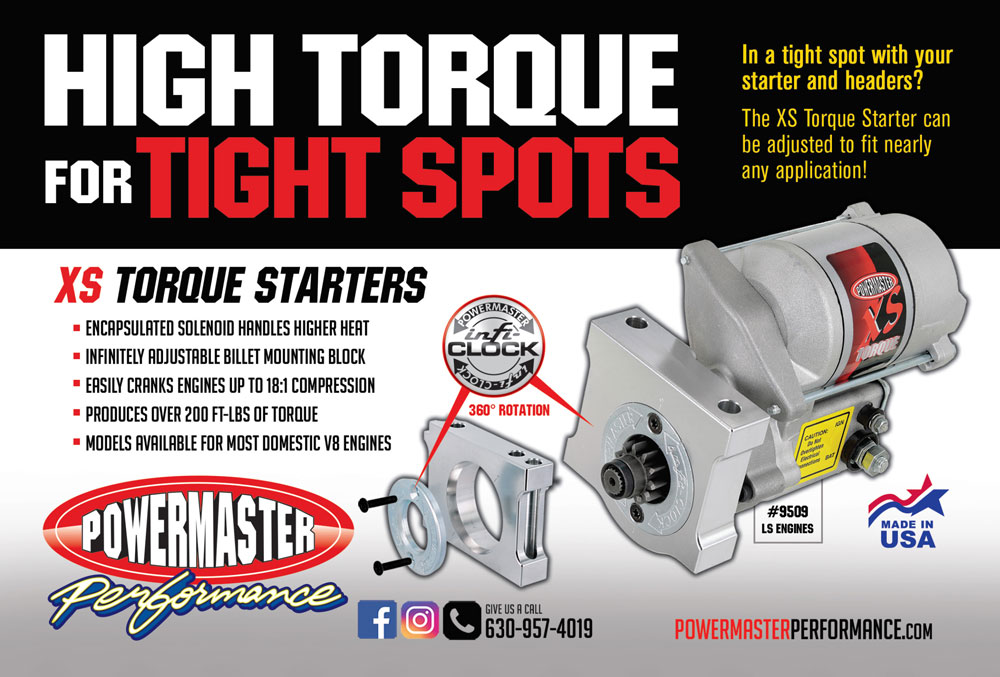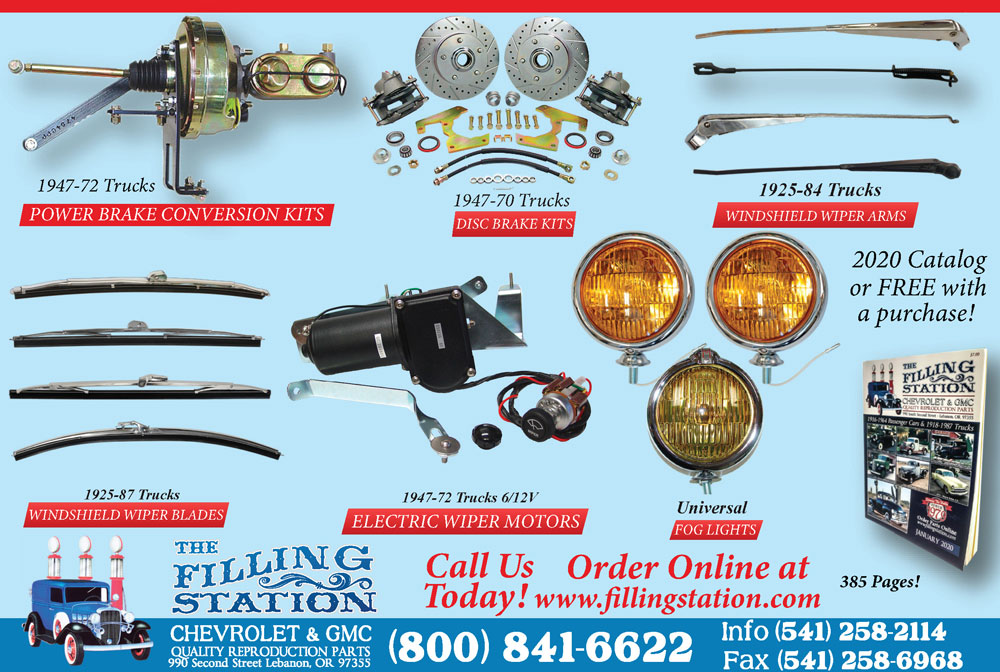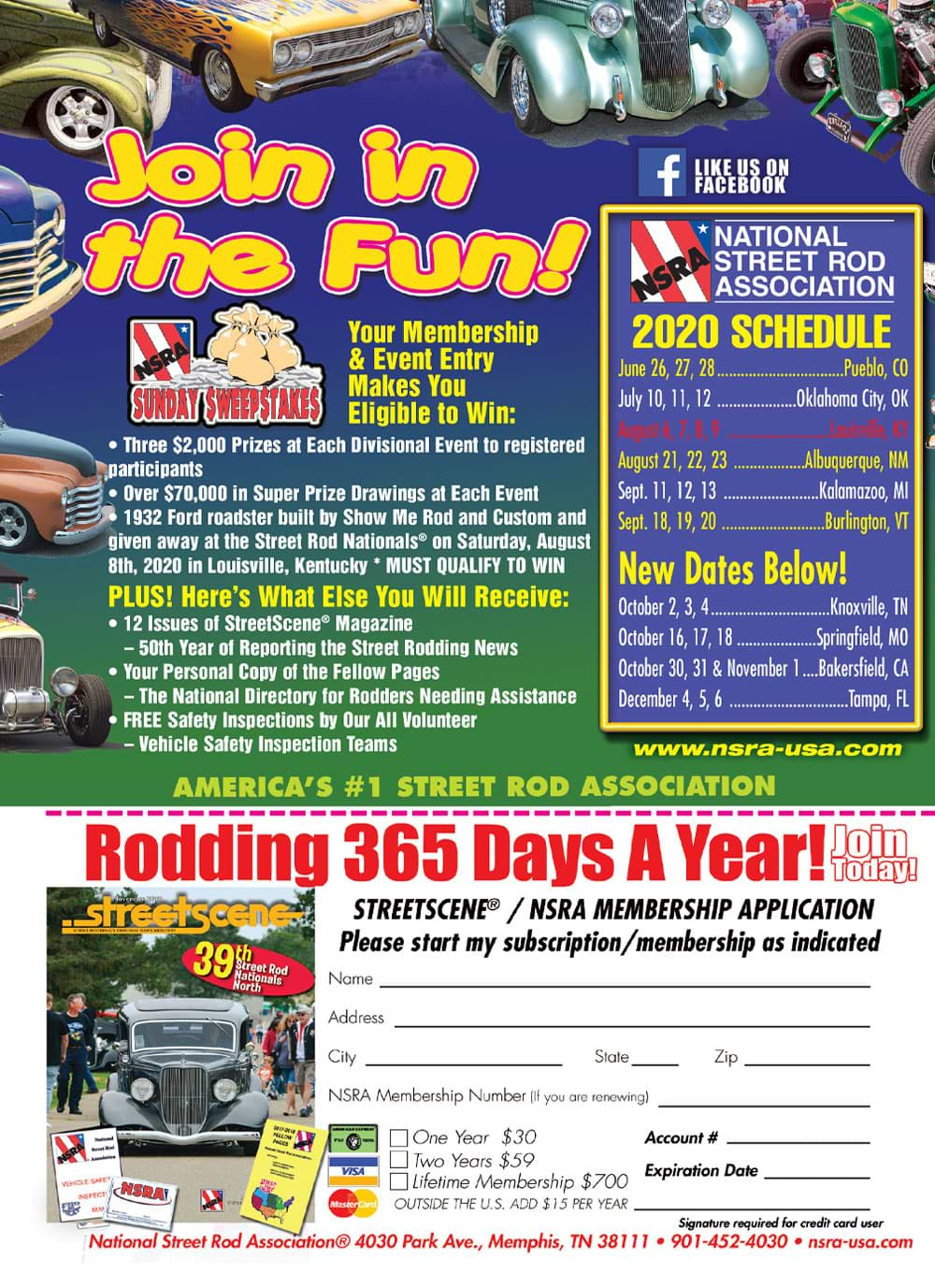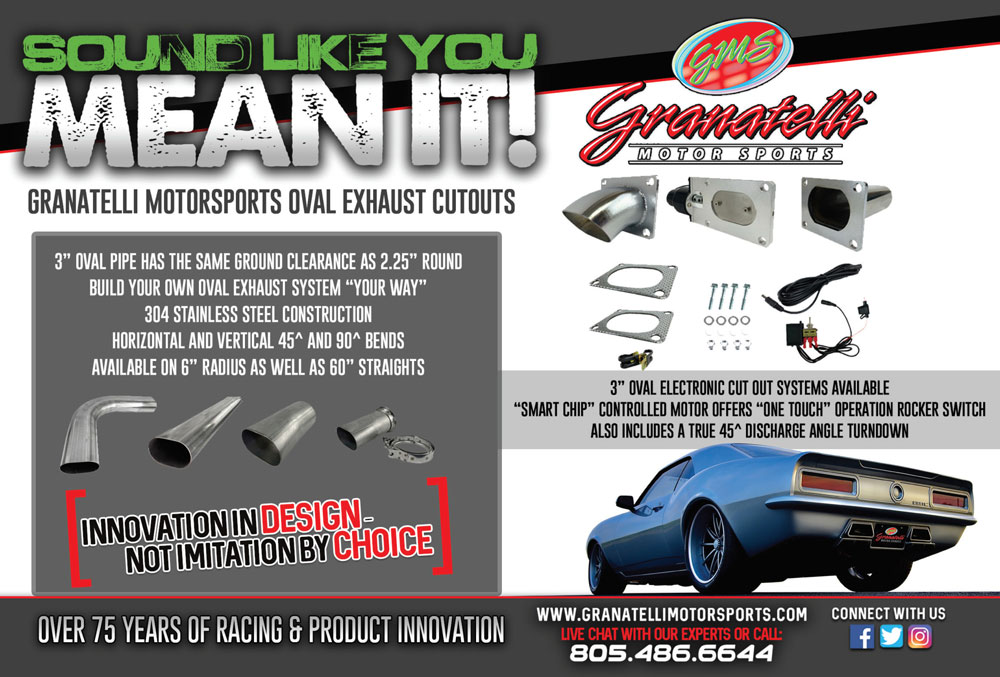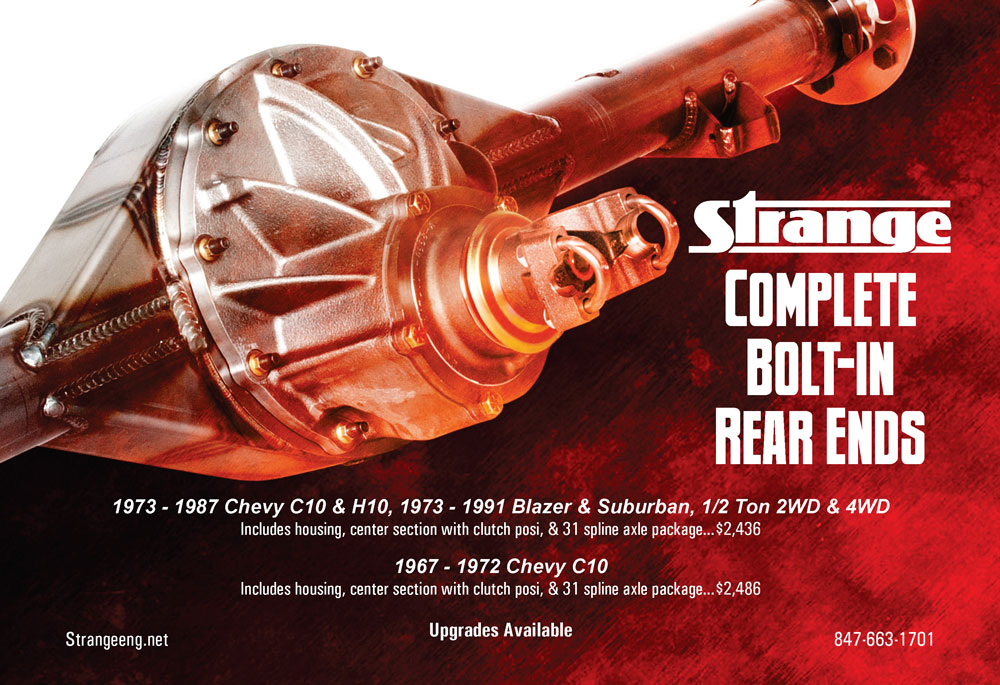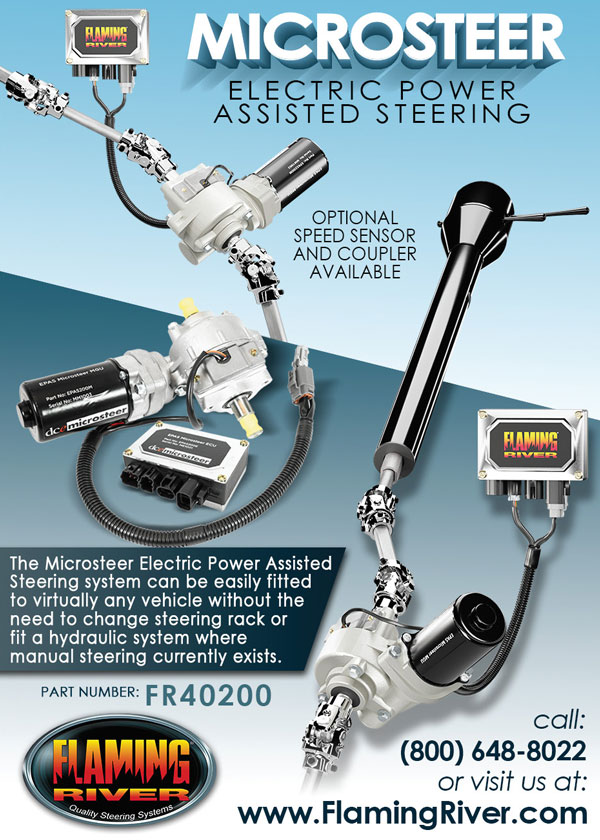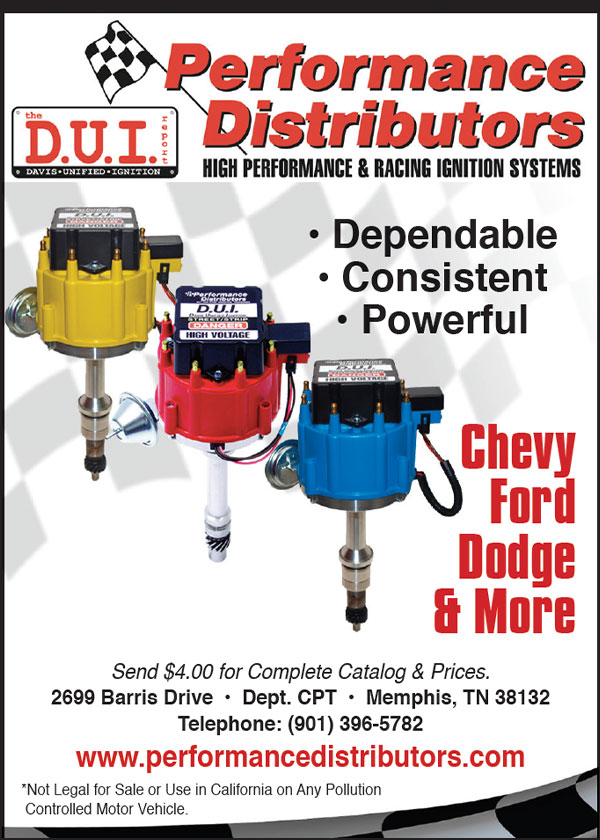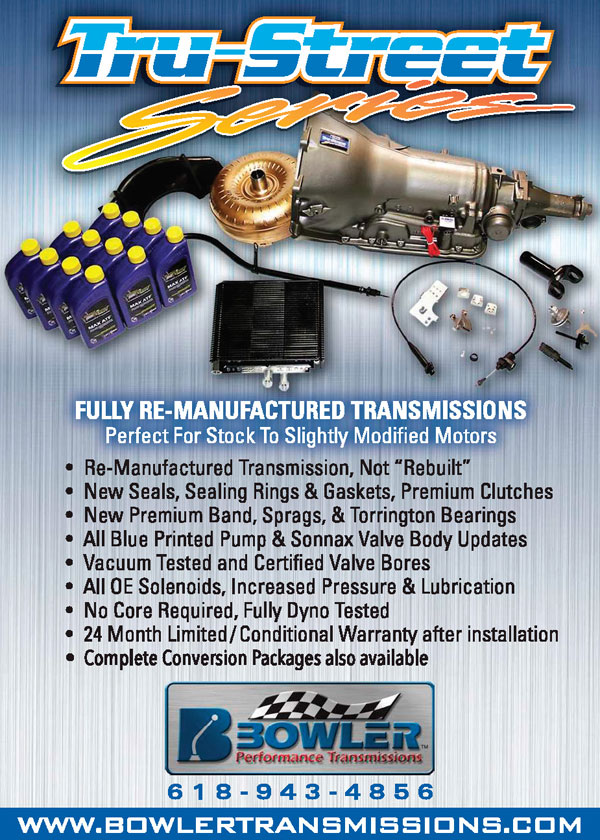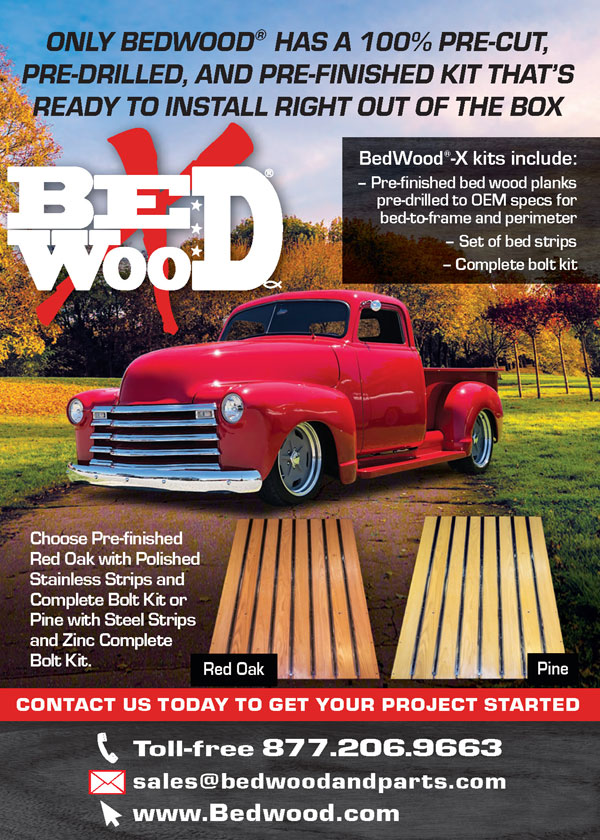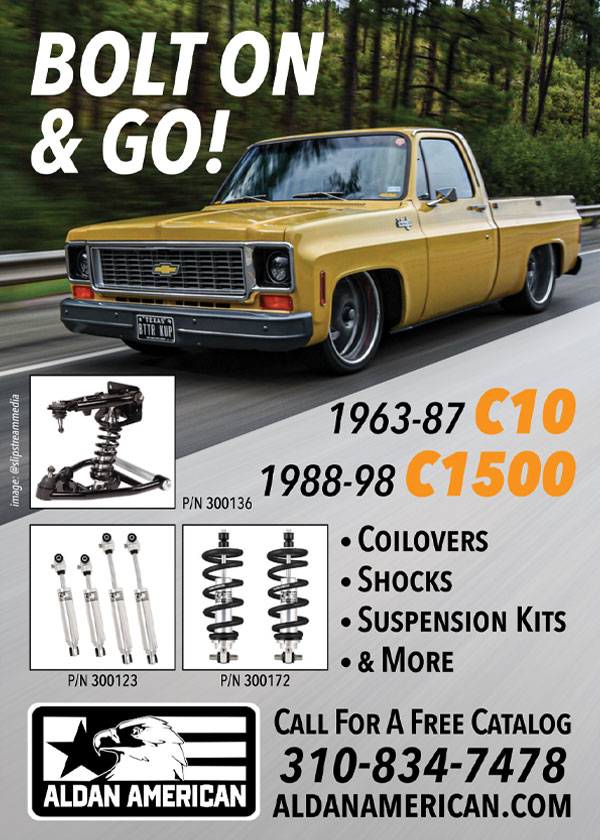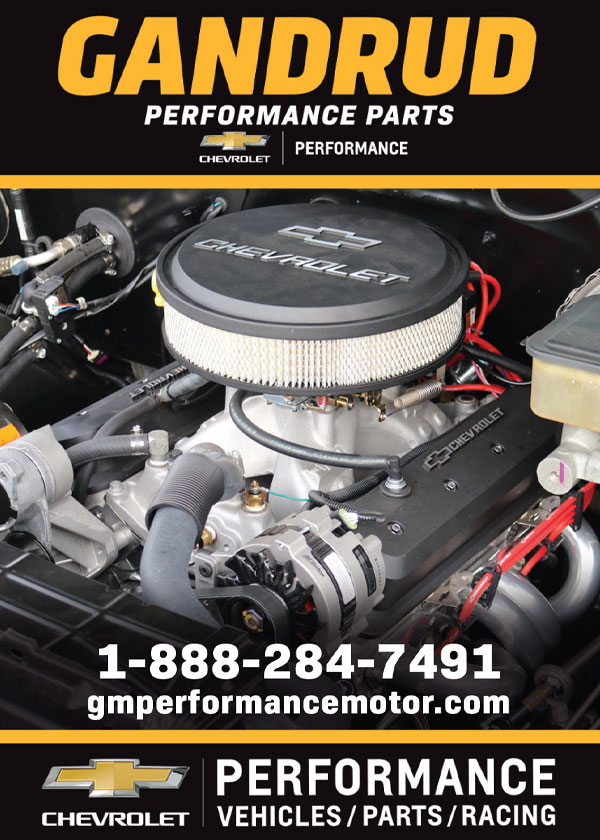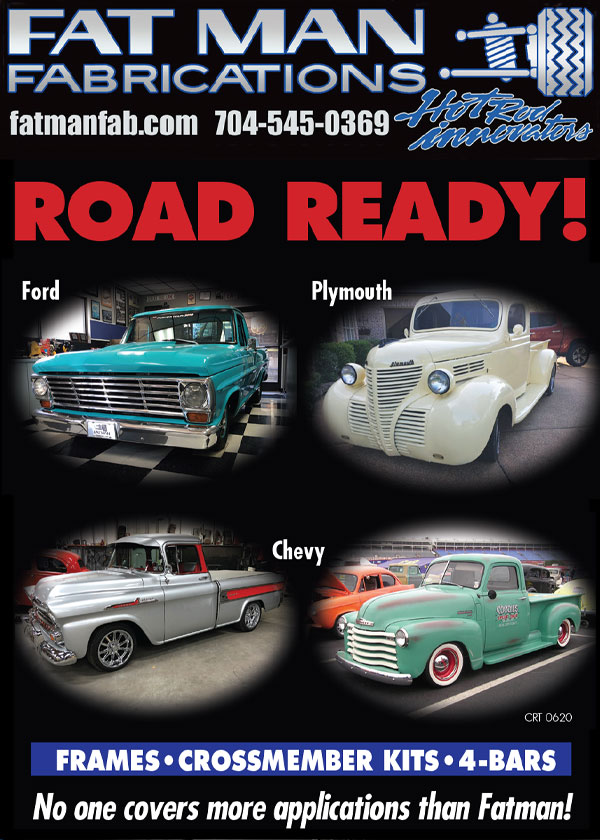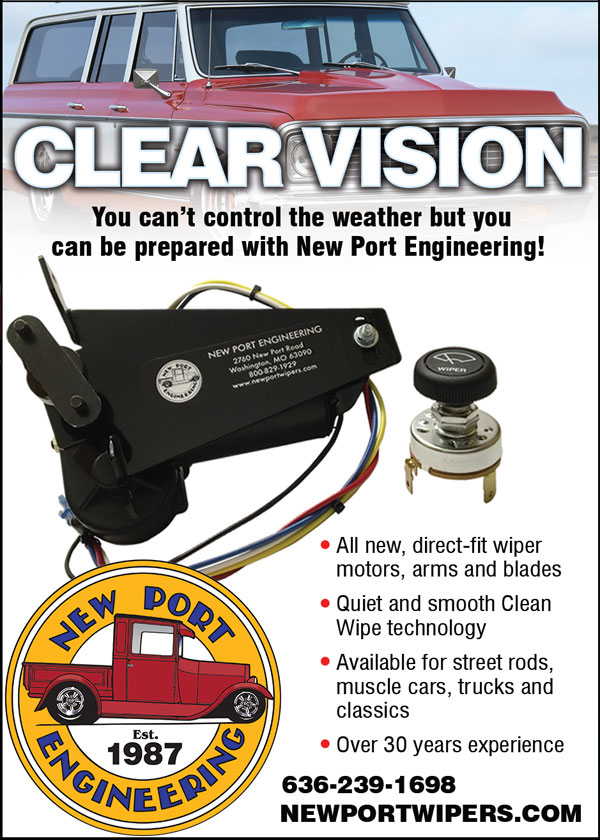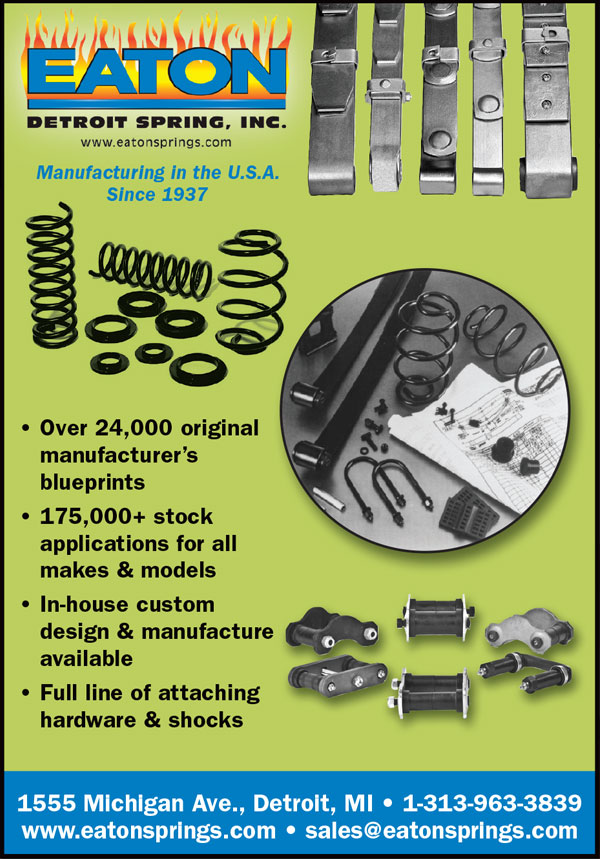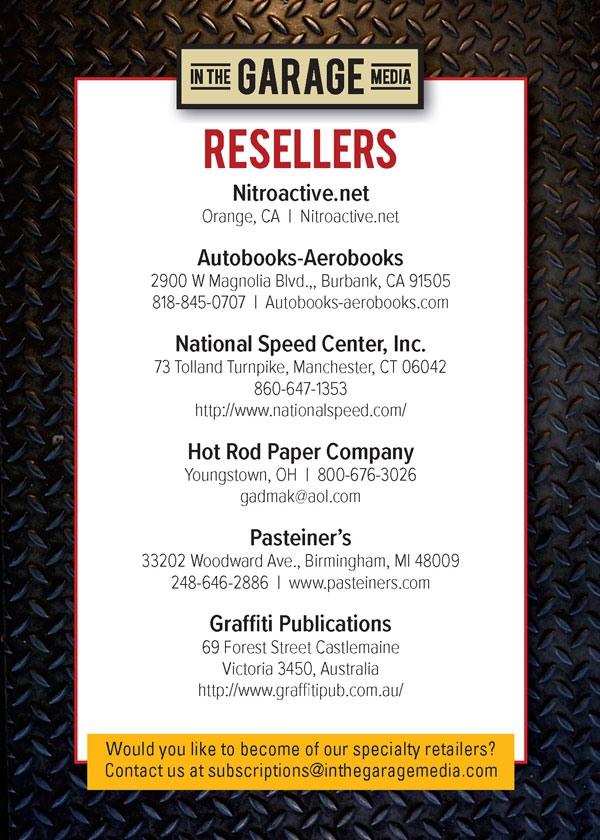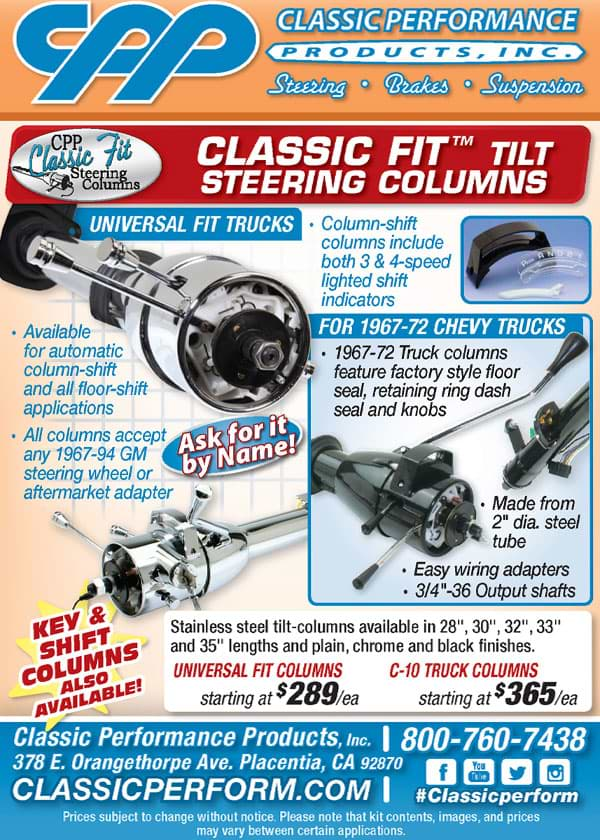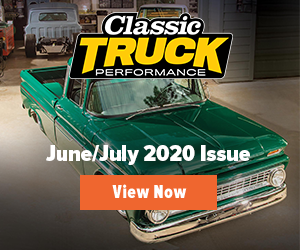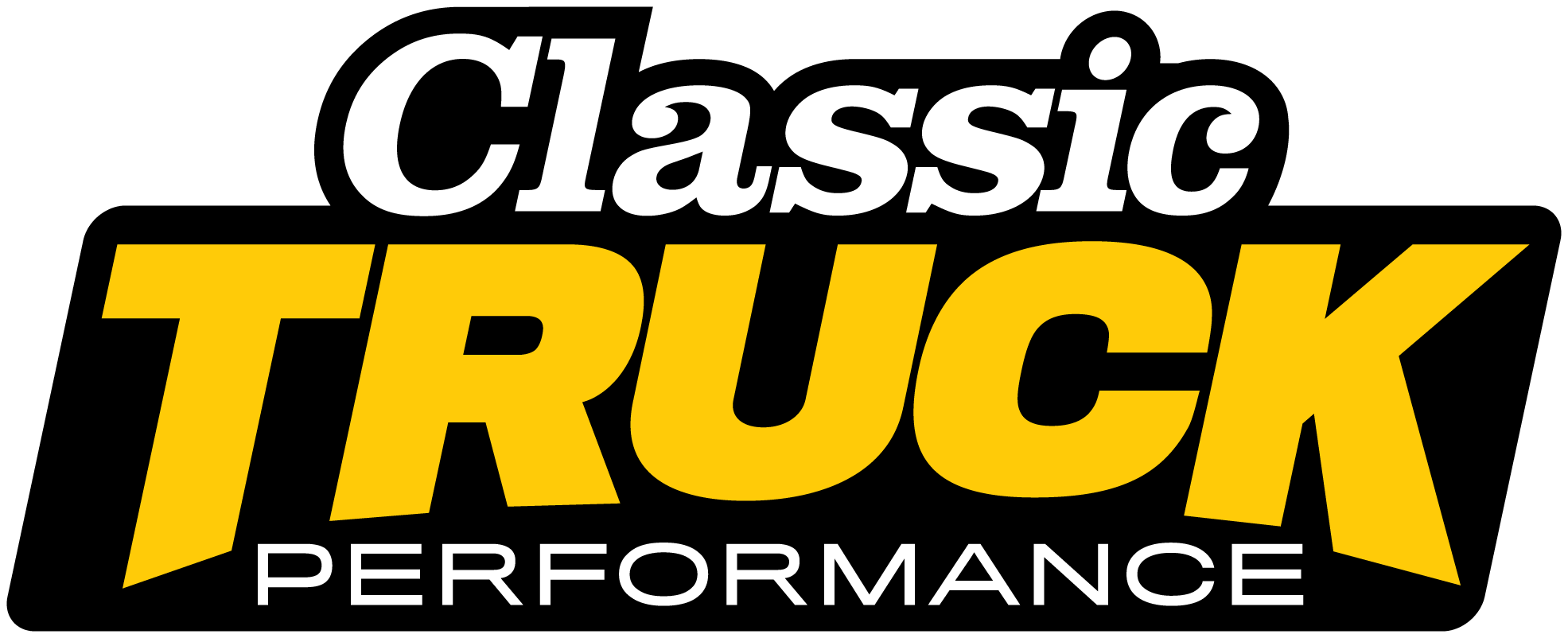
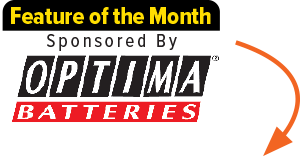
Tommy Lee Byrd, Ron Ceridono, Grant Cox, John Jackson, Barry Kluczyk, Ryan Manson, Todd Ryden, Chuck Vranas


BRIAN BRENNAN
bbrennan@inthegaragemedia.com
ROB FORTIER
rfortier@inthegaragemedia.com
TIM FOSS
tfoss@inthegaragemedia.com
YASMIN FAJATIN
yfajatin@inthegaragemedia.com
PAUL GRAFF
Sarah Gonzales – Copy Editor
Rodney Bauman, Tommy Lee Byrd, Ron Ceridono, Michael Christensen, Ron Covell, Gant Cox, Dominic Damato, John Drummond, Eric Geisert, Joe Greeves, John Jackson, Barry Kluczyk, Scotty Lachenauer, Nick Licata, Ryan Manson, Josh Mishler, Todd Ryden, Chris Shelton, Tim Sutton, Chuck Vranas – Writers and Photographers
Mark Dewey – National Sales Manager
Janeen Kirby – Sales Representative
Patrick Walsh – Sales Representative
ClassicTruckPerformance.com
ModernRodding.com
AllChevyPerformance.com
InTheGarageMedia.com
subscriptions@inthegaragemedia.com
ads@inthegaragemedia.com
EDITORIAL CONTRIBUTIONS
info@inthegaragemedia.com

Classic Truck Performance. October/November 2020, Vol 1, No 3 is published bi-monthly by In The Garage Media. 1350 E. Chapman Ave. #6650, Fullerton, CA 92834-6550.


initially wrote this last month for our sister pub, Modern Rodding, but just 30 days later, the message is still prominent enough to warrant its repeating. So, here we go!

for Modern Rodding
oing forward I thought it might be a good idea to provide some “nuts and bolts” for thought that turn outside the classic truck side of our hobby. Some of you, possibly many of you, are aware that Classic Truck Performance is but one of three brands within the garage of titles from In The Garage Media. Aside from CTP there’s Modern Rodding and All Chevy Performance.
MR, while entering its third issue (November/December), is hitting its stride with the wide range of subject matter that’s covered from within our hobby. MR, while referred to as a “hot rod” magazine, deals with all makes and models of cars. MR isn’t confined to one brand and you will even find pickups gracing the pages, albeit from much earlier decades than say an Advanced Design Chevy/GMC, a Ford F-1, C10, and so on. A roadster pickup from the ’20s or ’30s is as much a part of the rodding scene as a roadster car or coupe.
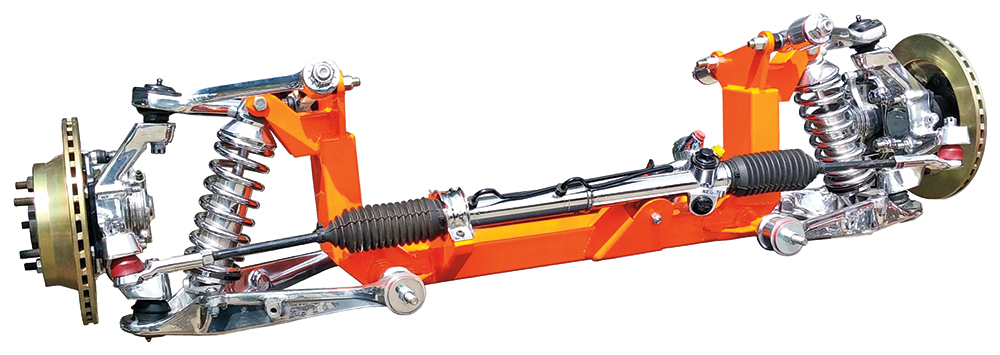
For more information, visit Flat Out Engineering at www.flatout-engineering.com.

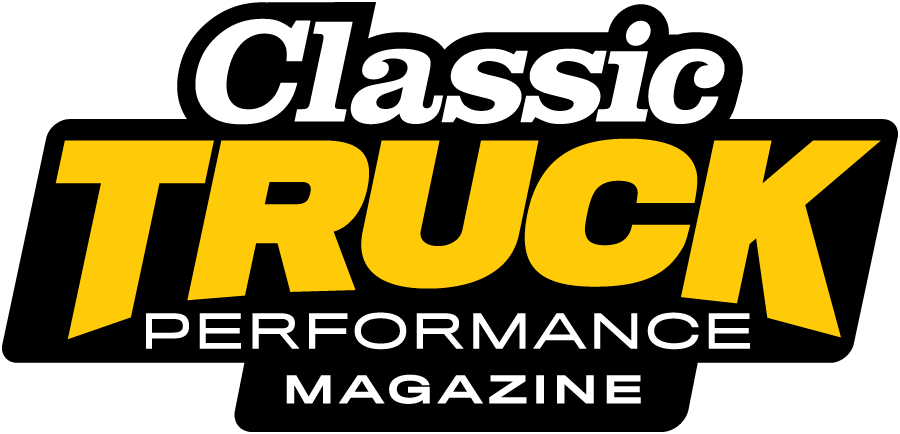
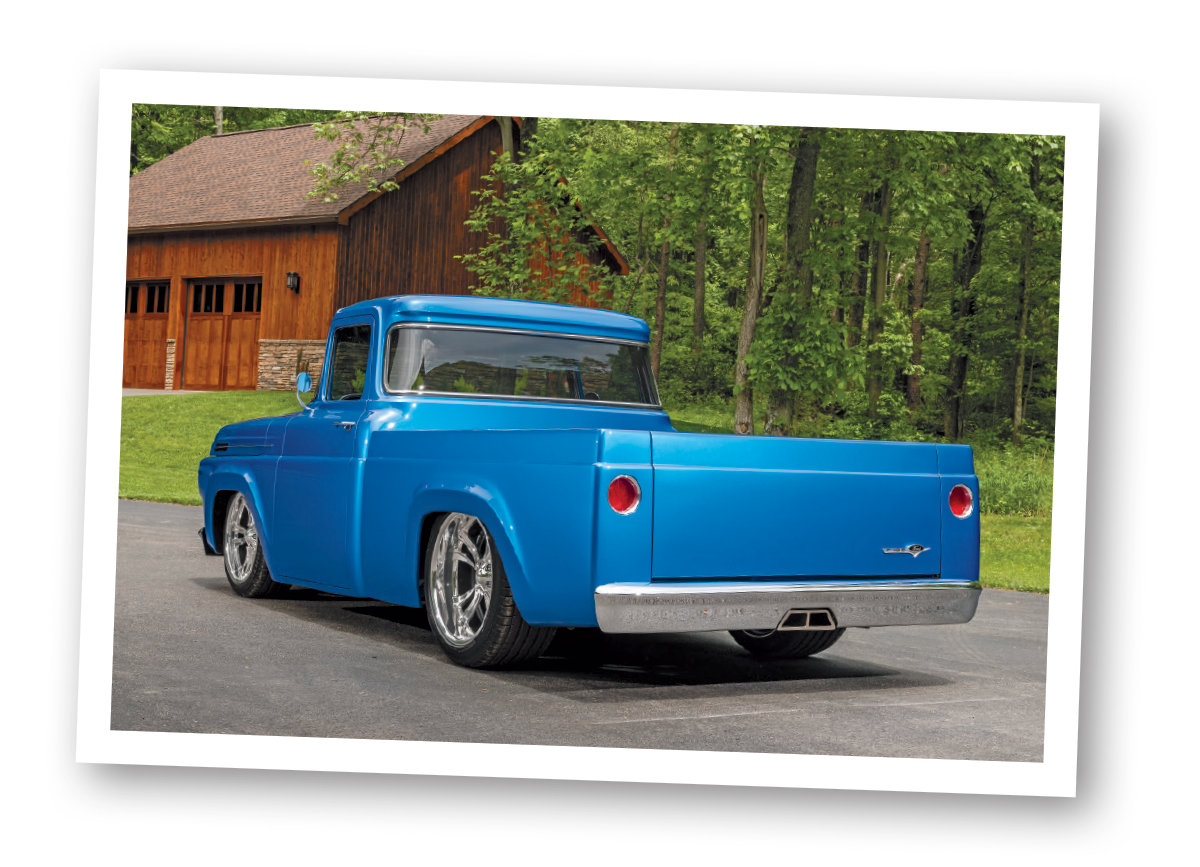
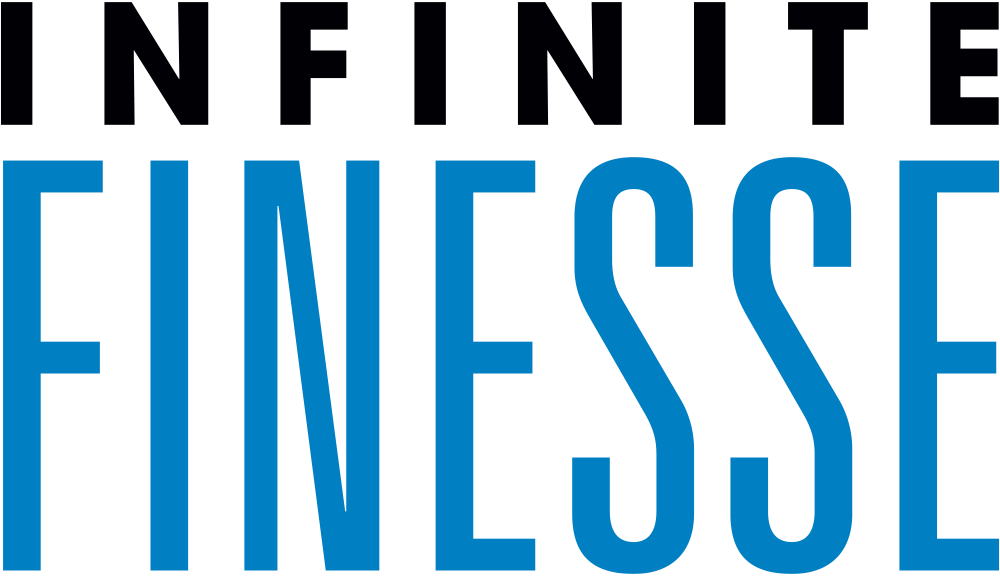
Photography by John Jackson
wanted a badass pickup that no one else had … to build something unique!”
No offense to owner Dan Bouchard, or builder Ryan Korek for that matter, but that sentiment, while having the best of intentions and all, is easier said than done—in most cases. But in this case, however, it seems seeing is believing, and believe me, this is one badass F-100!
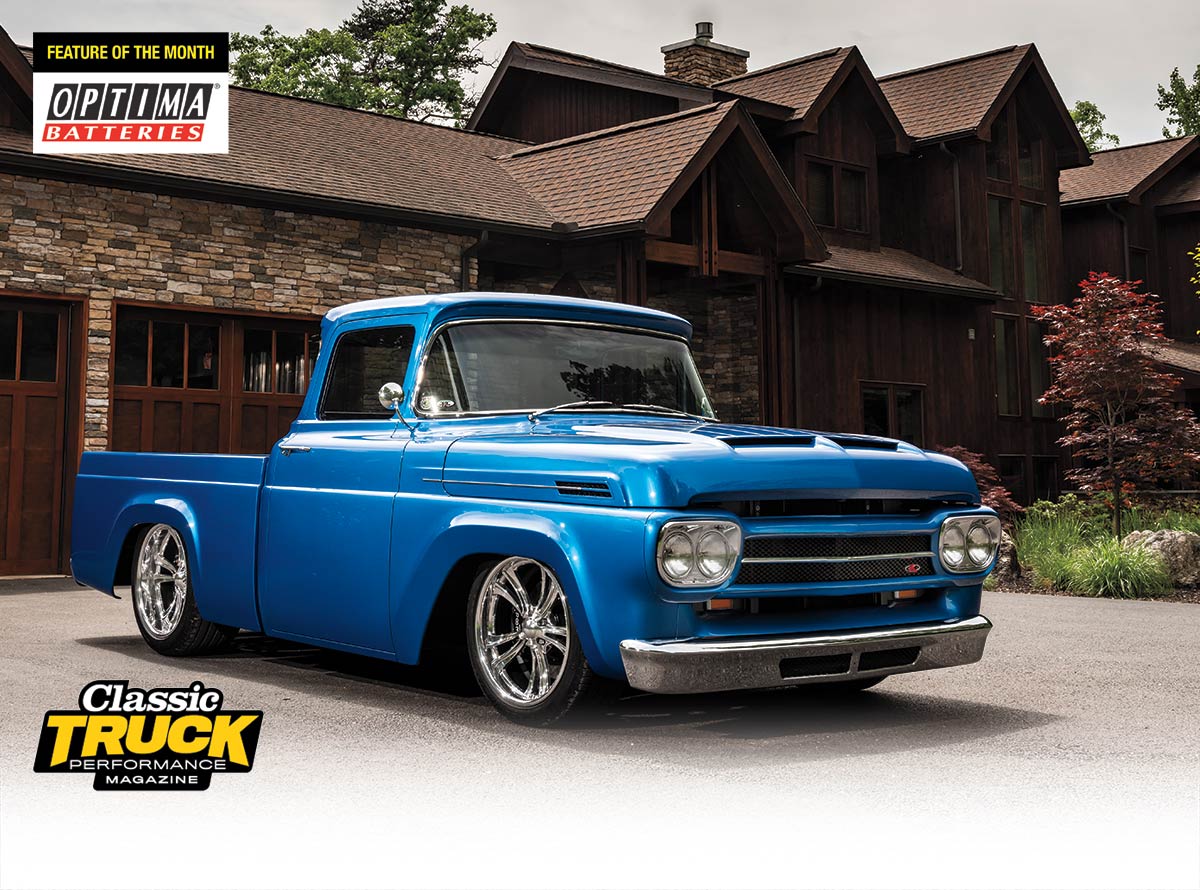

Photography by John Jackson
wanted a badass pickup that no one else had … to build something unique!”
No offense to owner Dan Bouchard, or builder Ryan Korek for that matter, but that sentiment, while having the best of intentions and all, is easier said than done—in most cases. But in this case, however, it seems seeing is believing, and believe me, this is one badass F-100!

Convenience
Photography by the Author
Convenience
Photography by the Author
That said, the 10/12-bolts and Dana 44/60s of the world are by no means inferior—it’s just that the semi-floating 9-inch seems to have suited most hot rodders as a whole over the last few decades, even though Ford Motor Company stopped producing them in 1986. But unlike those aforementioned companies dedicated solely to the 9-inch, Strange Engineering has catered to all walks of differential life for the past 50 years. However, what brings us here today just happens to be Strange’s C10 rear axle bolt-in 9-inch assembly for 1967-1972 Chevy/GMC 1/2-ton pickups (also available for the first-gen 1960-1966 and Squarebody 1973-1987 models as well).


Photography & Videography by the Author
othing breeds creativity better than teamwork. The ability for a group of like-minded individuals to freely express their design ideas offers the ability to create something with a fresh, new look. This was the thought that Chris Cerce, of Chris Cerce Customs in Taunton, Massachusetts, had for breathing new life into a recently purchased 1983 Chevy C10 truck project. The concept was to create a new shop truck while engaging all of the team members’ personal ideas on what it would take to make it a bitchin hauler. Chris, extremely well-known on the scene for his razor-sharp fabrication skills, grew up in the area with a deep passion for Chevy trucks, and this was the perfect opportunity to let the creativity flow.


Photography & Videography by the Author
othing breeds creativity better than teamwork. The ability for a group of like-minded individuals to freely express their design ideas offers the ability to create something with a fresh, new look. This was the thought that Chris Cerce, of Chris Cerce Customs in Taunton, Massachusetts, had for breathing new life into a recently purchased 1983 Chevy C10 truck project. The concept was to create a new shop truck while engaging all of the team members’ personal ideas on what it would take to make it a bitchin hauler. Chris, extremely well-known on the scene for his razor-sharp fabrication skills, grew up in the area with a deep passion for Chevy trucks, and this was the perfect opportunity to let the creativity flow.

teve Metcalf had wanted a 1955-1957 Chevy pickup ever since he was a teenager in Australia. Finding one became a lot easier when, in 2014, his engineering job for General Motors moved him from Down Under, where he’d worked for Holden, to the Motor City and GM’s proving ground outside of Detroit.



teve Metcalf had wanted a 1955-1957 Chevy pickup ever since he was a teenager in Australia. Finding one became a lot easier when, in 2014, his engineering job for General Motors moved him from Down Under, where he’d worked for Holden, to the Motor City and GM’s proving ground outside of Detroit.
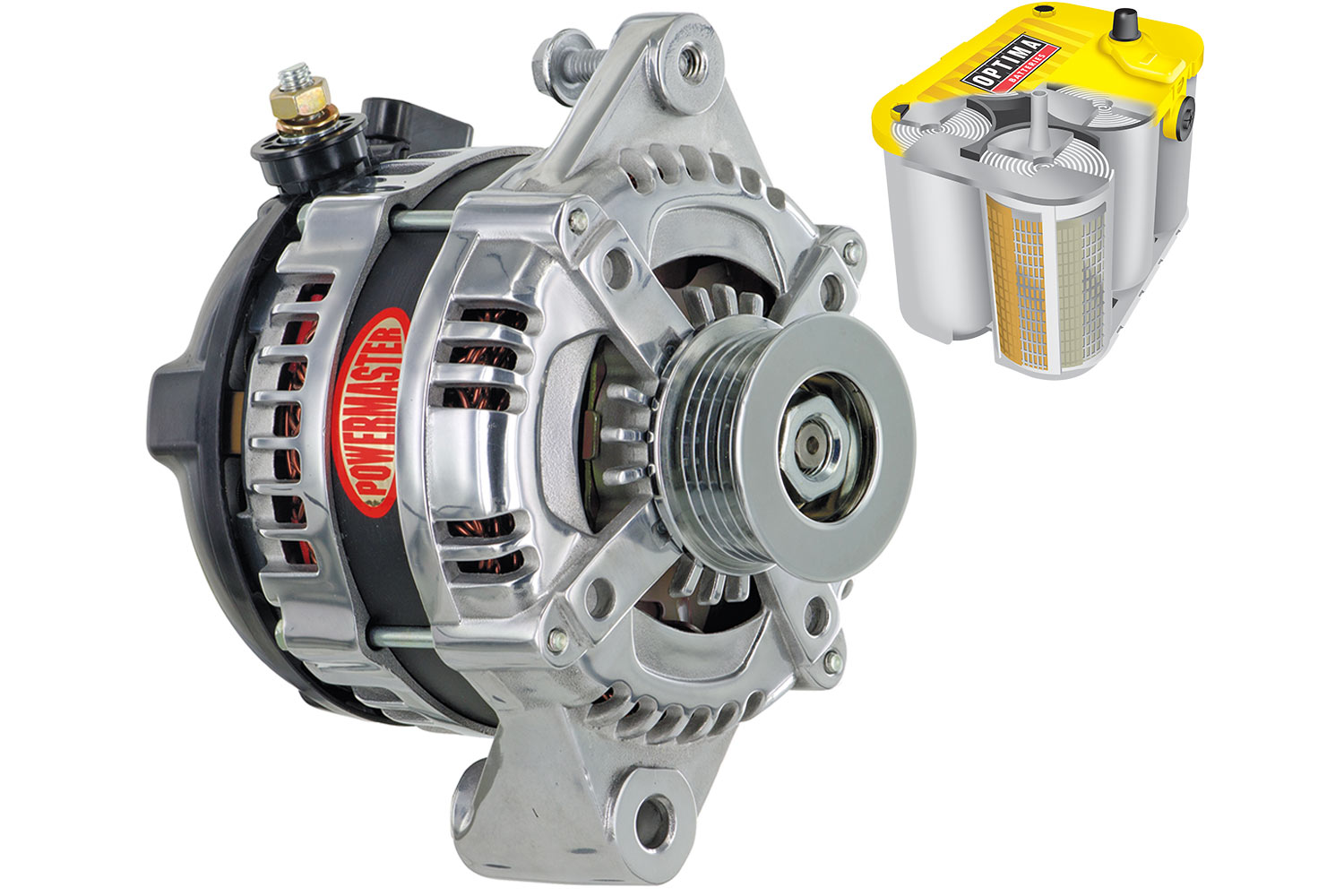
Photography Courtesy of Powermaster Performance & Optima Batteries
If you’re like most of us who are into classic trucks, about the only time you think about the alternator in your ride is if the lights go out and the engine quits in the middle of nowhere. Batteries are often ignored as well. As long as the engine fires when you’re ready to hit the road there’s nothing to think or worry about. But, when you hit the starter and there’s nothing more than a click from underhood, that plastic box that’s supposed to be full of volts but isn’t will suddenly become a concern.


Photography by the Author

ike Farley loves just about anything with wheels, from off-road buggies to drag cars and everything in between. This slammed 1952 Chevy pickup is some of his handiwork, and his intention from day one was to build a cool truck that he could drive on a regular basis. He didn’t want an all-out show truck, so he kept it simple and made the truck functional and cool at the same time.



Photography by the Author

ike Farley loves just about anything with wheels, from off-road buggies to drag cars and everything in between. This slammed 1952 Chevy pickup is some of his handiwork, and his intention from day one was to build a cool truck that he could drive on a regular basis. He didn’t want an all-out show truck, so he kept it simple and made the truck functional and cool at the same time.

ike Farley loves just about anything with wheels, from off-road buggies to drag cars and everything in between. This slammed 1952 Chevy pickup is some of his handiwork, and his intention from day one was to build a cool truck that he could drive on a regular basis. He didn’t want an all-out show truck, so he kept it simple and made the truck functional and cool at the same time.

School
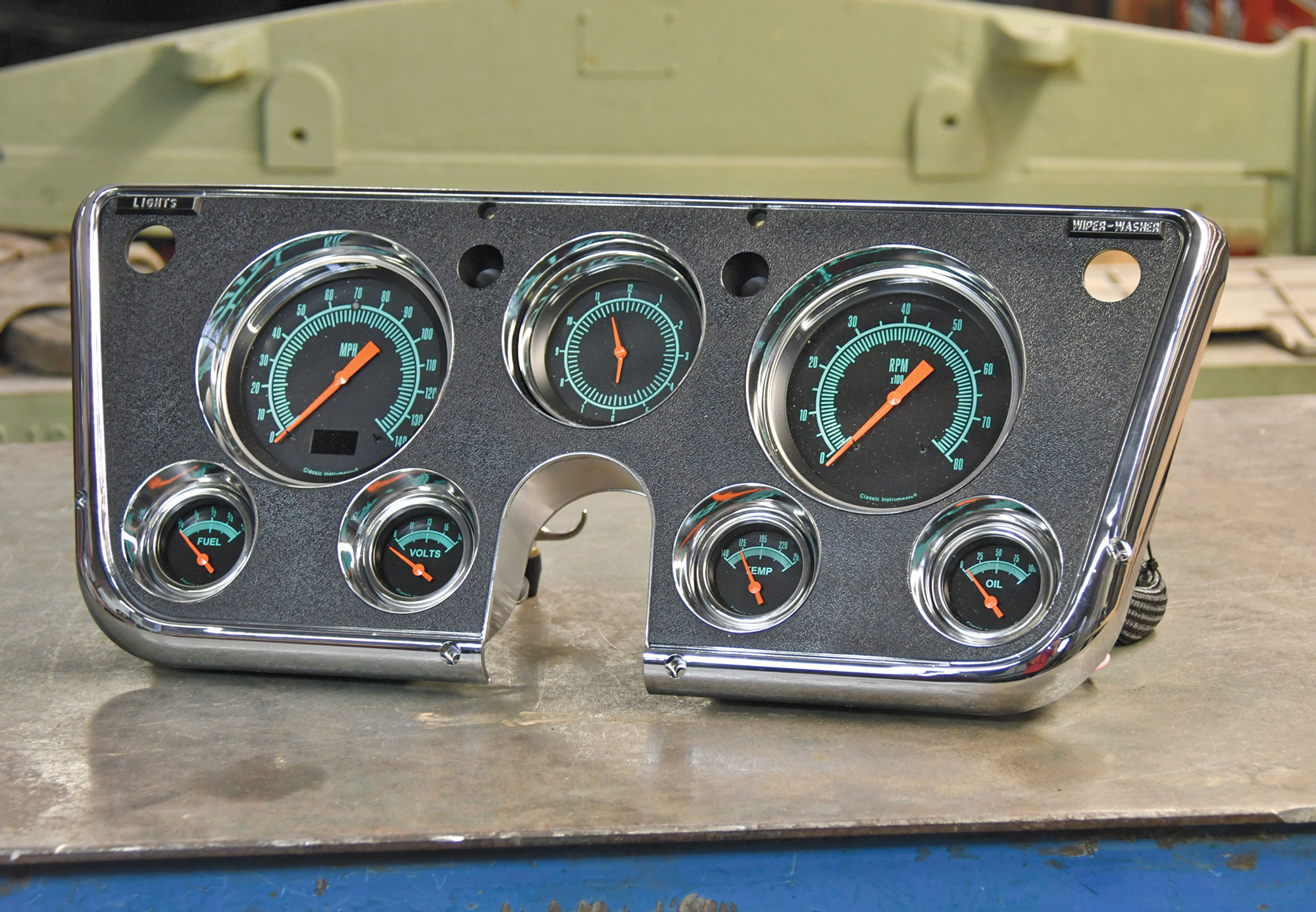
Some may say that the instrument cluster of the 1967-1972 GM C10 pickup was nearly perfect in terms of ergonomics and function. A large, easy-to-view speedometer and fuel gauge across a flat plane along with supporting gauges across the bottom (when included). The rare tach option right in the middle of the dash is icing on the cake and was great placement for tow rigs and work trucks.
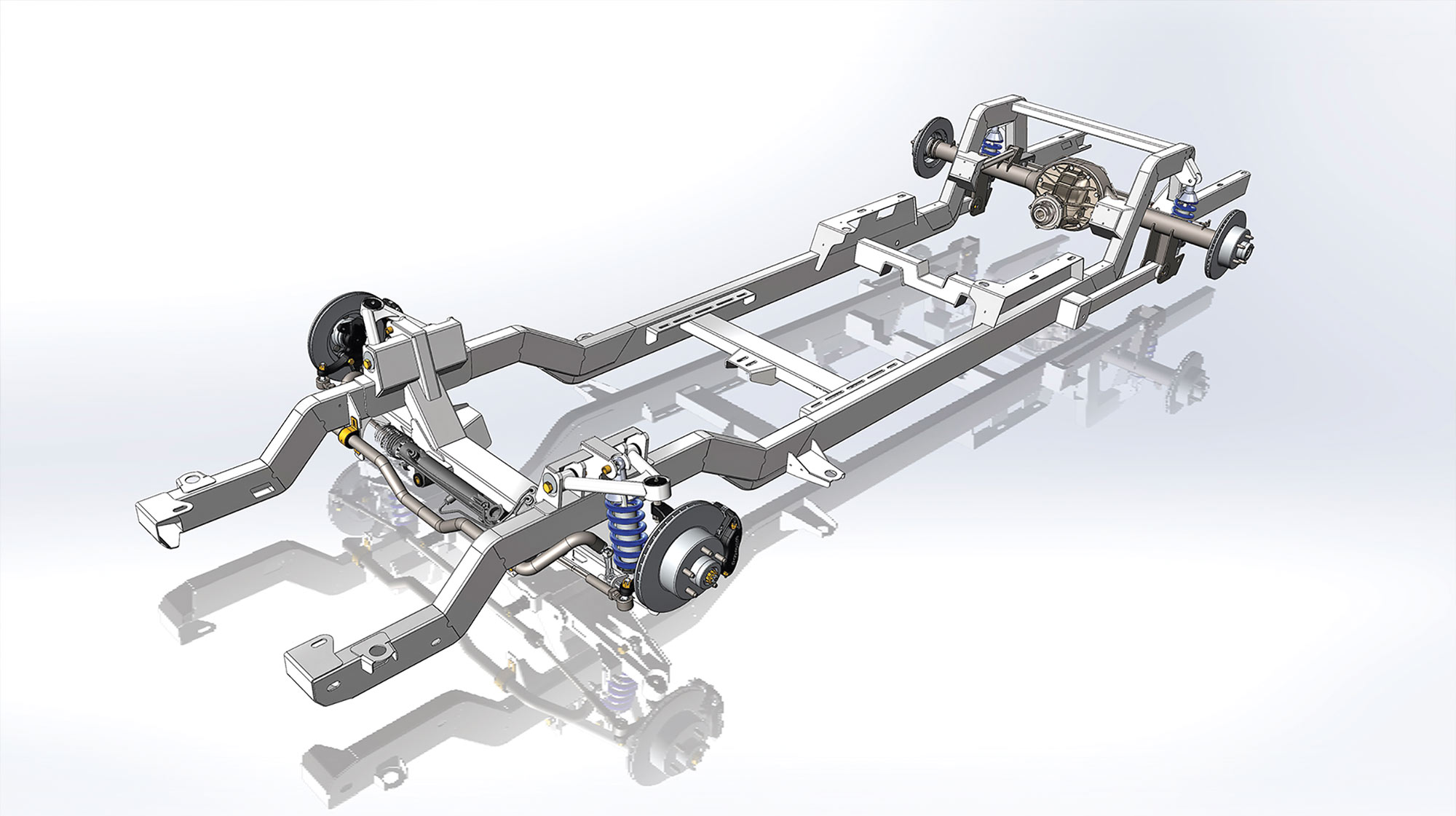
Building a custom, classic truck begins with the proper chassis. The foundation of your build needs to properly represent the intent of said build. For example, if you’re building a ’60s Ford truck and your vision calls for a truck that lays rocker, you’re going to be hard-pressed to make that happen with the stock twin-I beam suspension design. More than likely, that stock Ford chassis is going to need to be heavily modified. Labor is time, and time is money. On the other hand, if your build simply calls for an upgrade in brakes, suspension, and steering with perhaps an engine swap upgrade, rolling out the old in exchange for the new in one fell swoop might make the same amount of sense. With 40-plus years of use and abuse under these trucks, there’s no doubt you’re likely to find some kind of damage, modifications, or other “previous-owner-made repairs” that will need to be fixed before the modifications can even begin. So, whether your build calls for some serious modifications to the frame, a handful of stock upgrades, or you’d rather just have the peace of mind that comes with a brand-new chassis, swapping out that old twisted frame for new might just make the most sense. And it’s probably cheaper than you think!

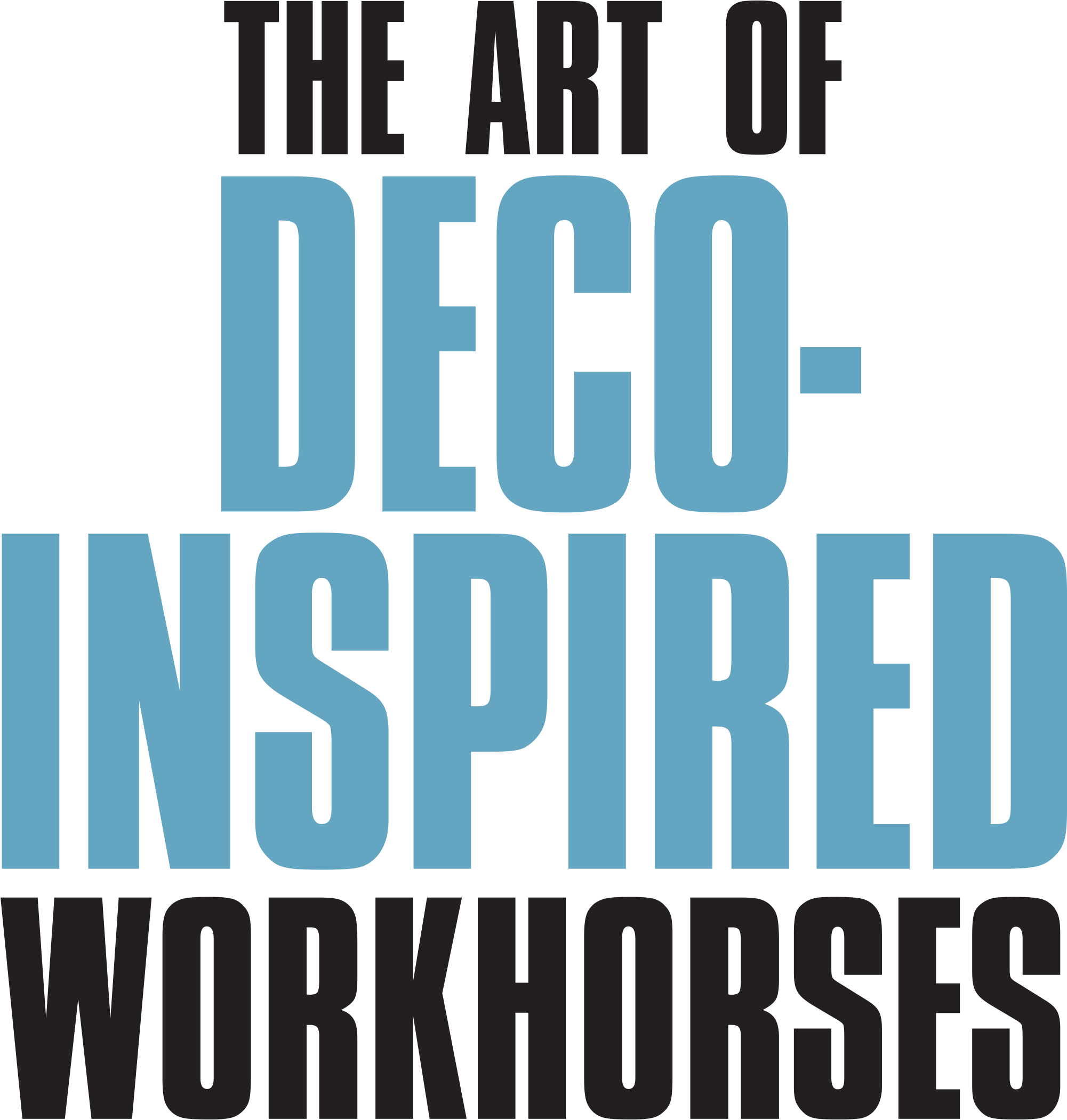
Photography by Grant Cox
f there’s one thing I love when it comes to mid-century and earlier domestic trucks, it’s the Art Deco era and the beautiful design aspects integrated into both light-duty passenger models and the heavy-duty commercial haulers. Whether it’s a COE or CC-Series, General Motors got it right with their full line of trucks in the ’30s clear on through the ’40s—especially the GMCs, which can’t always be said in some years to follow (sorry Jimmy folk!).


Photography by Grant Cox
f there’s one thing I love when it comes to mid-century and earlier domestic trucks, it’s the Art Deco era and the beautiful design aspects integrated into both light-duty passenger models and the heavy-duty commercial haulers. Whether it’s a COE or CC-Series, General Motors got it right with their full line of trucks in the ’30s clear on through the ’40s—especially the GMCs, which can’t always be said in some years to follow (sorry Jimmy folk!).
Ad Index
- Aldan American88
- American Autowire27
- American Legend Wheels77
- Art Morrison Enterprises15
- Automotive Racing Products43
- BedWood and Parts88
- Bowler Performance Transmissions87
- Brothers Truck Parts92
- Chevs of the 40’s71
- Classic Instruments11
- Classic Performance Products4-5, 90
- Custom Autosound69
- Dakota Digital91
- Dynamat39
- Eaton Detroit Spring, Inc.90
- Eddie Motorsports63
- Fat Man Fabrication89
- Filling Station, The75
- FiTech EFI61
- Flaming River Industries7, 87
- Flat Out Engineering89
- Gandrud Chevrolet88
- Golden Star Classic Auto Parts6
- Granatelli Motor Sports, Inc.69
- Heidts Suspension Systems75
- LMC Truck47
- Lokar2, 49
- National Street Rod Association67
- New Port Engineering89
- Old Air Products79
- OPTIMA Batteries13
- Performance Distributors87
- Performance Online37
- Phoenix Transmission Products89
- Powermaster Performance71
- Premier Street Rods87
- Roadster Shop45
- Schwartz Performance77
- Scott’s Hotrods79
- Speedway Motors59
- Strange Engineering81
- Thermo-Tec Automotive88
- Vintage Air9
- Wilwood Engineering57

